How to Teach Reading Comprehension to Kids: Fun, Engaging, and Effective Methods!
Welcome to the wild, wonderful world of teaching reading comprehension! If you're a parent or a teacher, you're probably familiar with the joy and occasional frustration of helping kids unlock the magic of reading. Today, we’re diving into some delightful strategies, tips, and activities that will not only boost your child's or student’s reading comprehension but also make the process fun and engaging. Grab a cup of coffee (or a juice box), and let’s get started!
Phonics Reading Comprehension: The Building Blocks of Reading
Phonics is the foundation of reading. Understanding the relationship between letters and sounds is crucial for young readers. The Phonics Reading Comprehension Passage is an excellent tool for enhancing reading skills.
Here's why it works:
1. Phonics Fluency As kids read stories, they highlight phonics features they've learned. This method reinforces their understanding and helps them recognize patterns. Plus, matching words to pictures makes the process interactive and visually stimulating.
2. Test Reading Understanding To ensure comprehension, kids answer multiple-choice questions, open-ended questions, and even retell the story through drawings. This variety keeps things interesting and caters to different learning styles.
3. Sequencing Events Sequencing events by numbering sentences helps kids understand the flow of the story. It’s like piecing together a puzzle, which they find quite satisfying!
4. Comparing Characters Comparing characters based on traits, preferences, or actions encourages critical thinking. Kids love playing detective and figuring out what makes each character tick. 5. Essay/Enumeration Asking personal questions that relate to the story allows kids to connect on a deeper level. They might write about their favorite character or imagine how they would react in a similar situation.
Beginning Reading Comprehension: Starting with the Basics When it comes to beginning readers, it's essential to keep things simple yet engaging. Here are a few specific reading comprehension passages that can make a significant impact:
1. Beginning Blends Reading Comprehension Passage This passage focuses on beginning blend words, which are combinations of letters that create unique sounds (like "bl" in "blue"). Kids practice reading fluency and comprehension through various activities, including:
- Answering multiple-choice questions
- Open-ended questions
- Retelling the story by drawing
- Word and picture matching
- Sequencing events
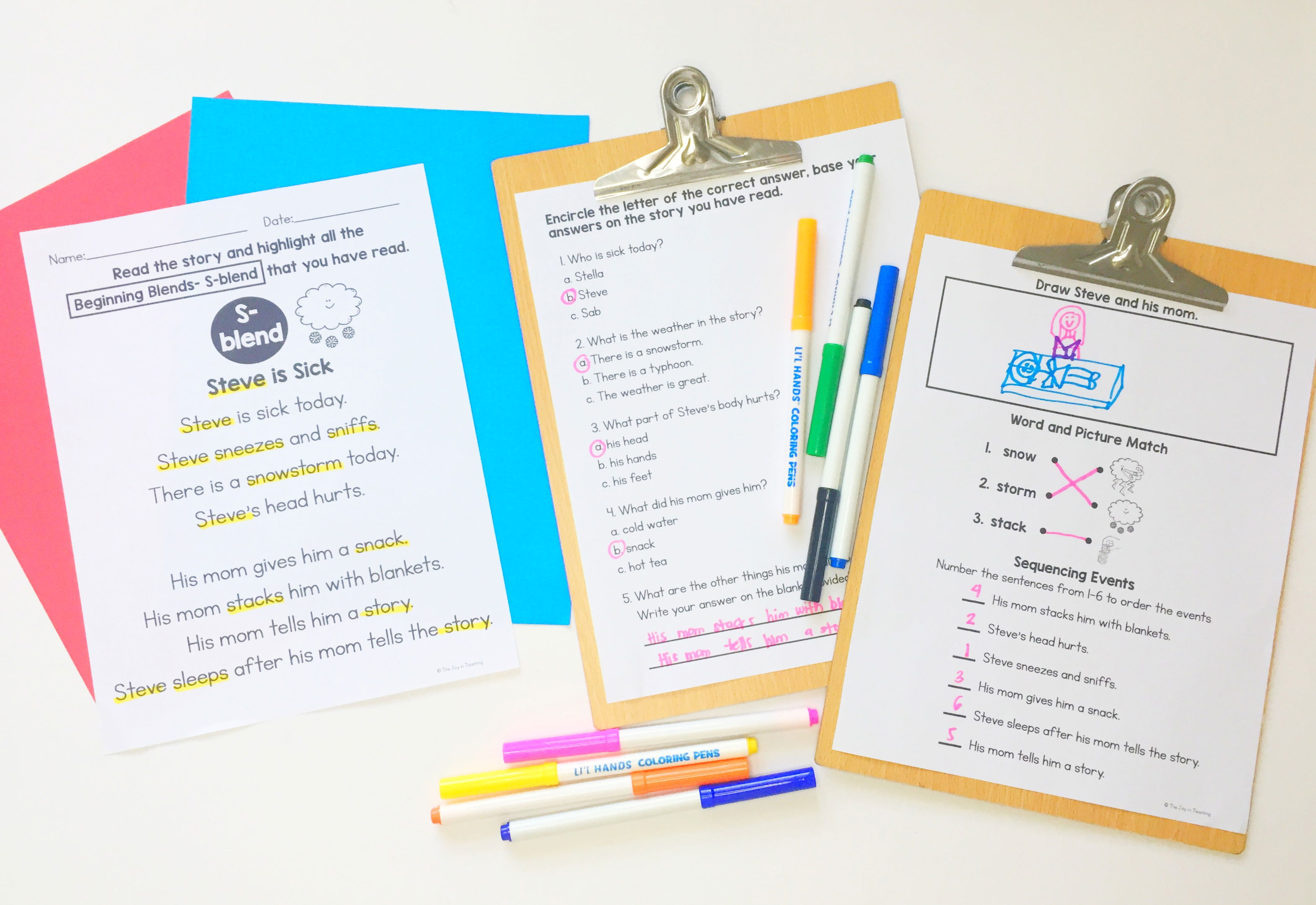
2. Digraph Reading Comprehension Passage Digraphs are two letters that make one sound (like "ch" in "chicken"). This passage helps kids master digraphs while engaging in the same types of fun, interactive activities mentioned above.
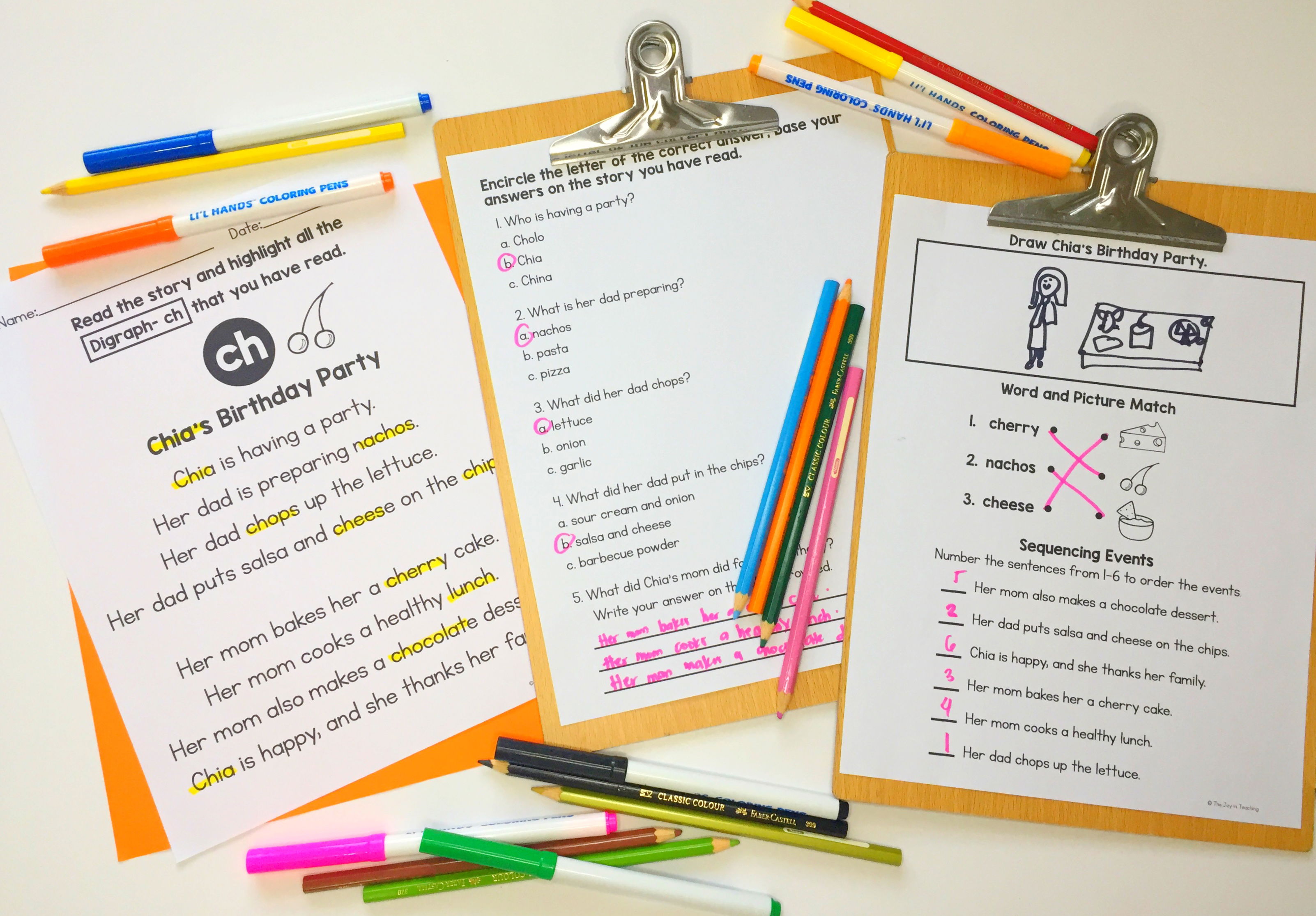
3. Diphthong Reading Comprehension Passage Diphthongs are complex vowel sounds (like "oy" in "boy"). This passage ensures kids get plenty of practice with these tricky sounds, making reading more accessible and enjoyable.
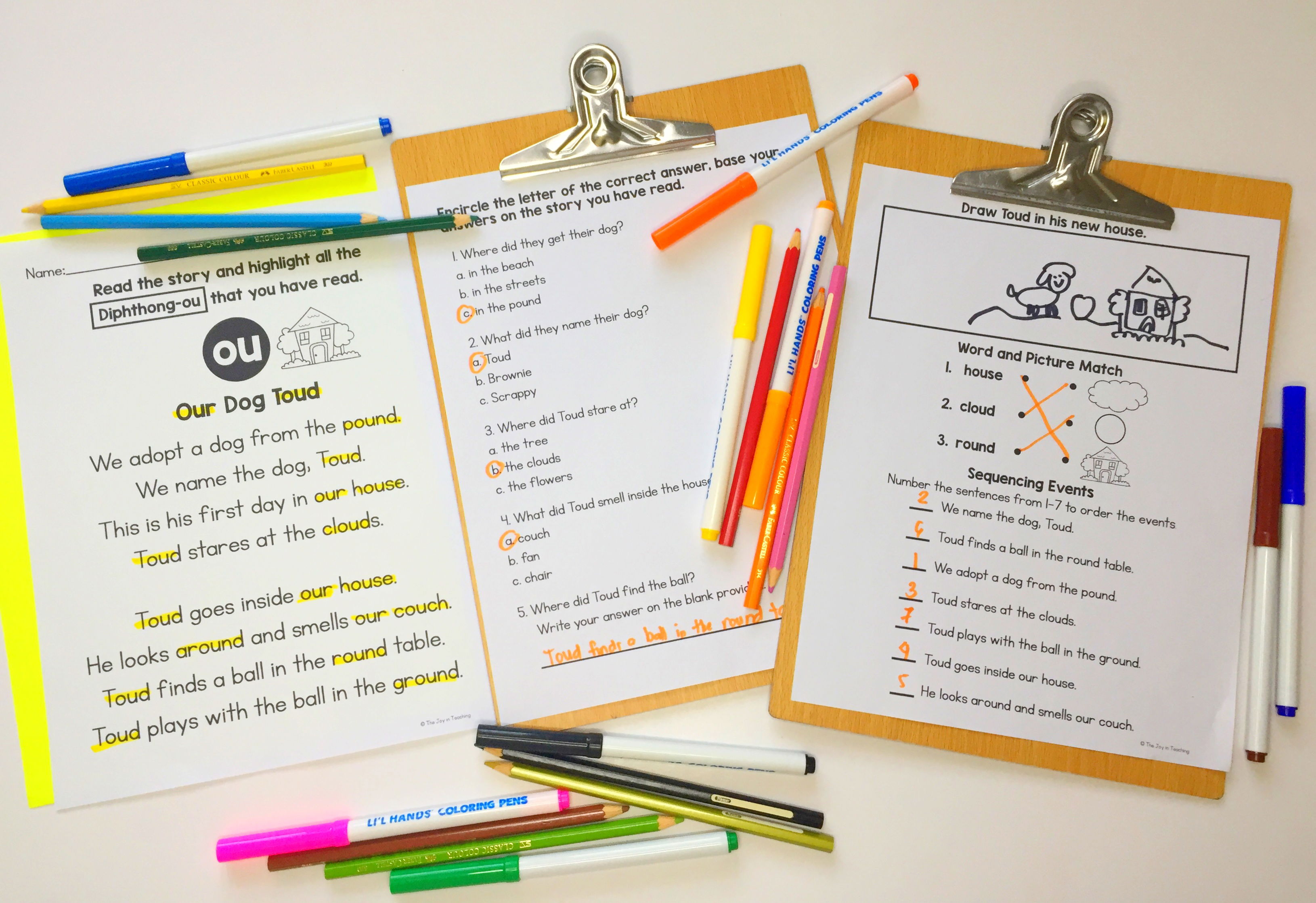
4. Ending Blends Reading Comprehension Passage Focusing on ending blends, this passage enhances kids' ability to recognize and read words with ending blends through multiple-choice questions, open-ended questions, and drawing.
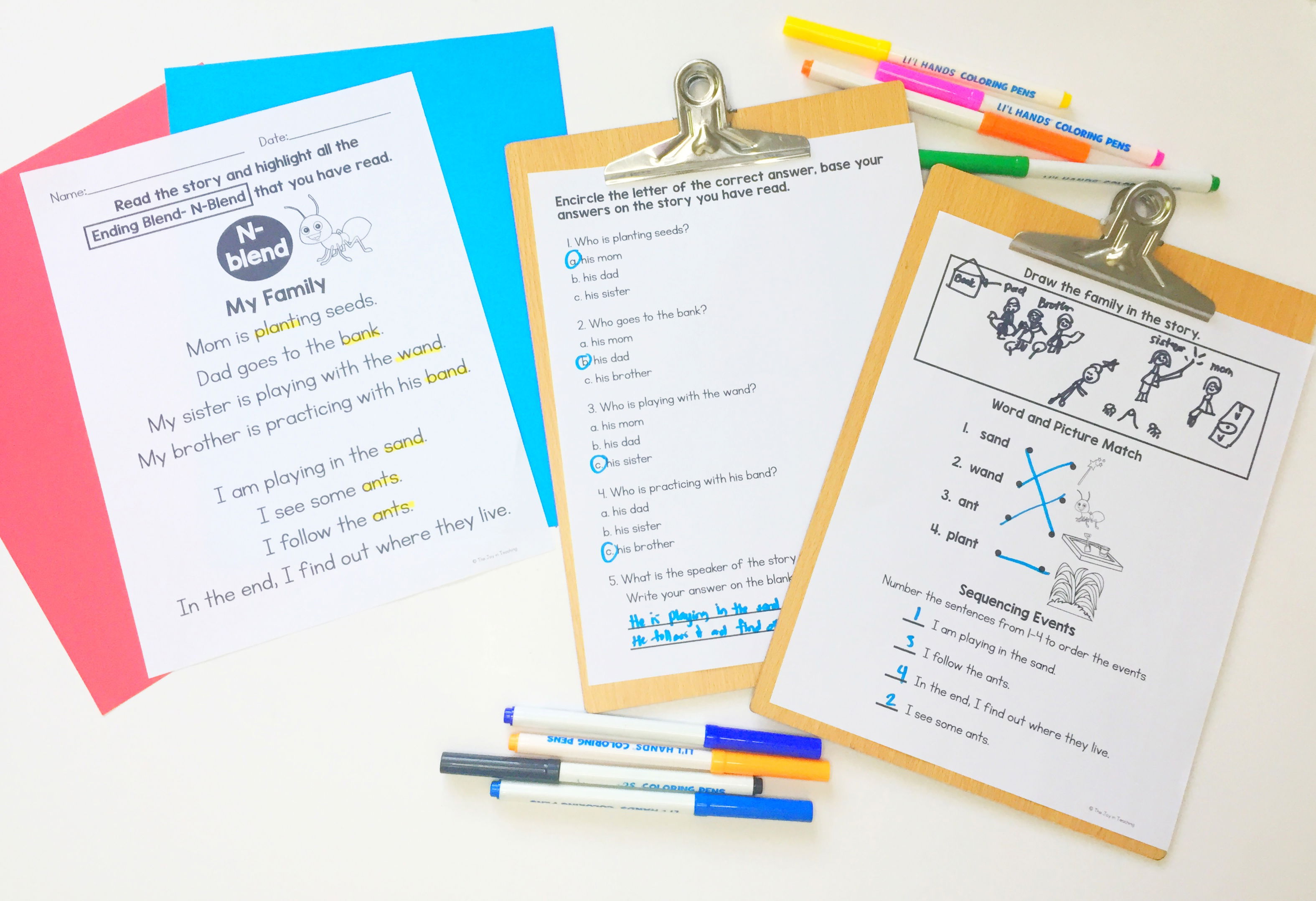
5. Long Vowel A Reading Comprehension Passage This passage helps kids practice reading words with long vowel A sounds. They engage in various activities to reinforce their understanding and improve comprehension.
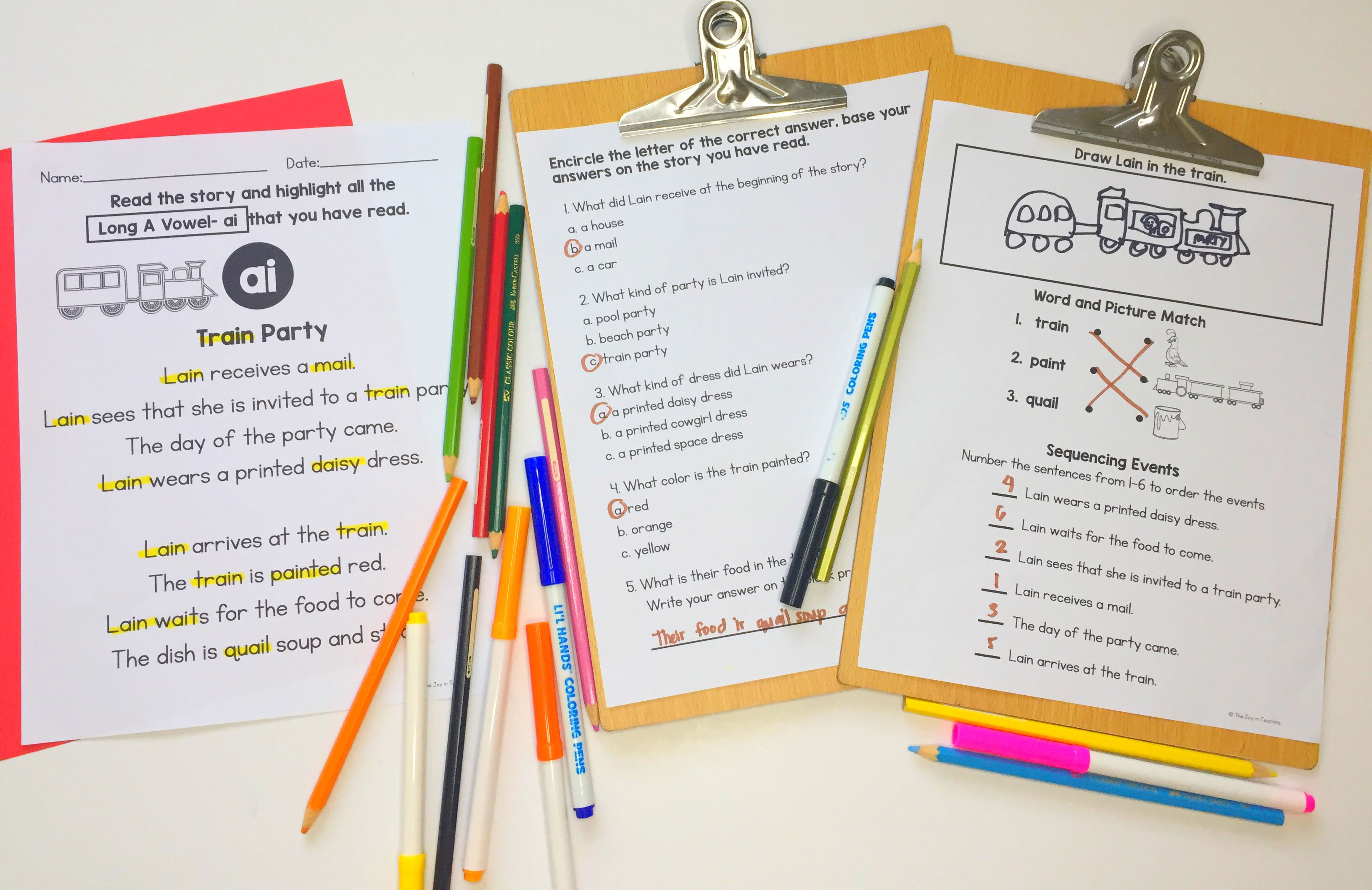
6. Long Vowel E Reading Comprehension Passage Designed for differentiated learning, this passage targets long vowel E sounds. Kids engage in multiple-choice questions, drawing, and word and picture matching to enhance comprehension.
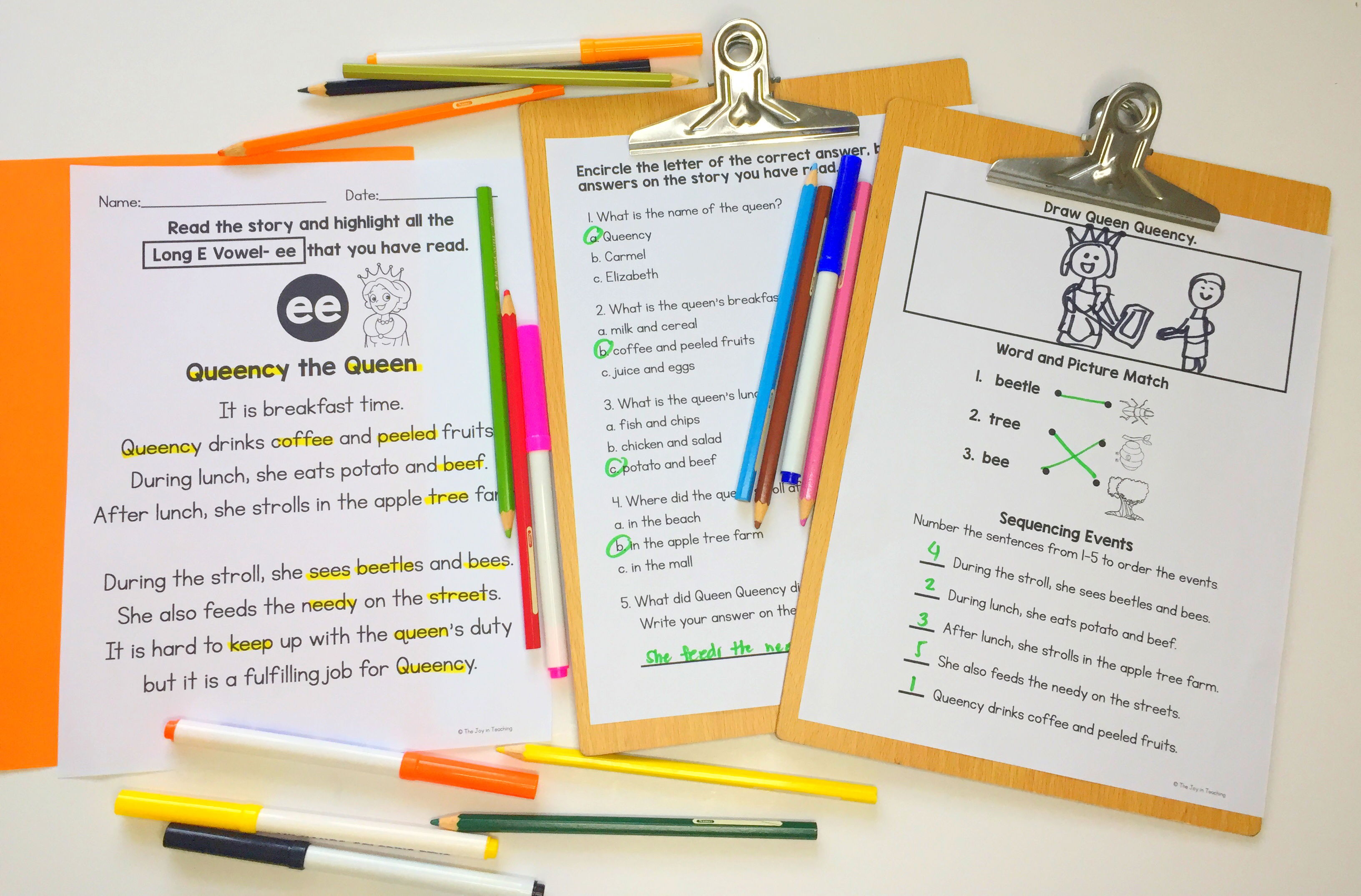
7. Long Vowel I Reading Comprehension Passage Focusing on long vowel I sounds, this passage helps kids improve reading fluency and comprehension through a variety of interactive activities.
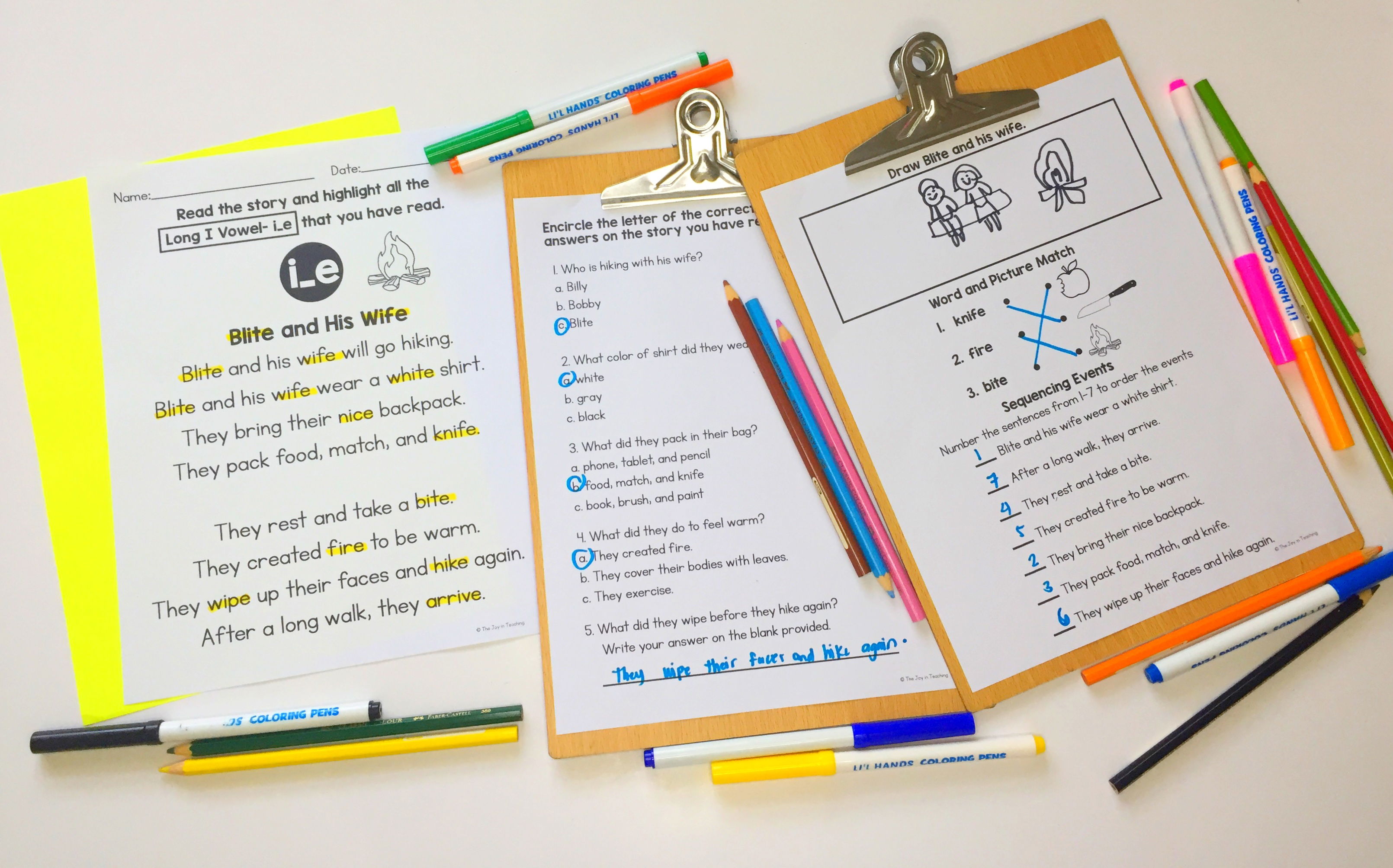
8. Long Vowel O Reading Comprehension Passage This passage targets long vowel O sounds, helping kids practice reading and comprehension skills through engaging activities.
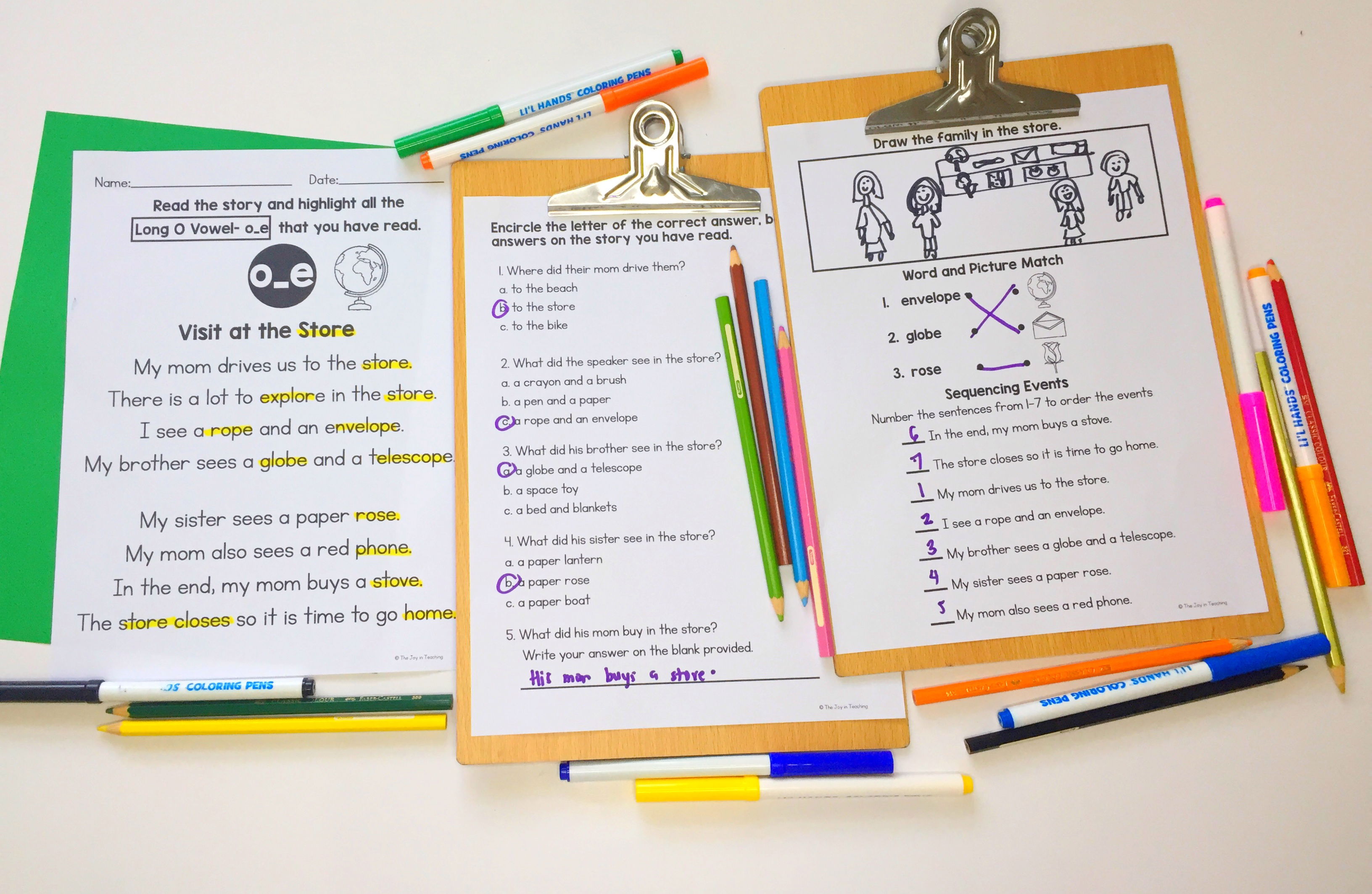
9. Long Vowel U Reading Comprehension Passage Focusing on long vowel U sounds, this passage helps kids enhance their reading skills with various comprehension activities.
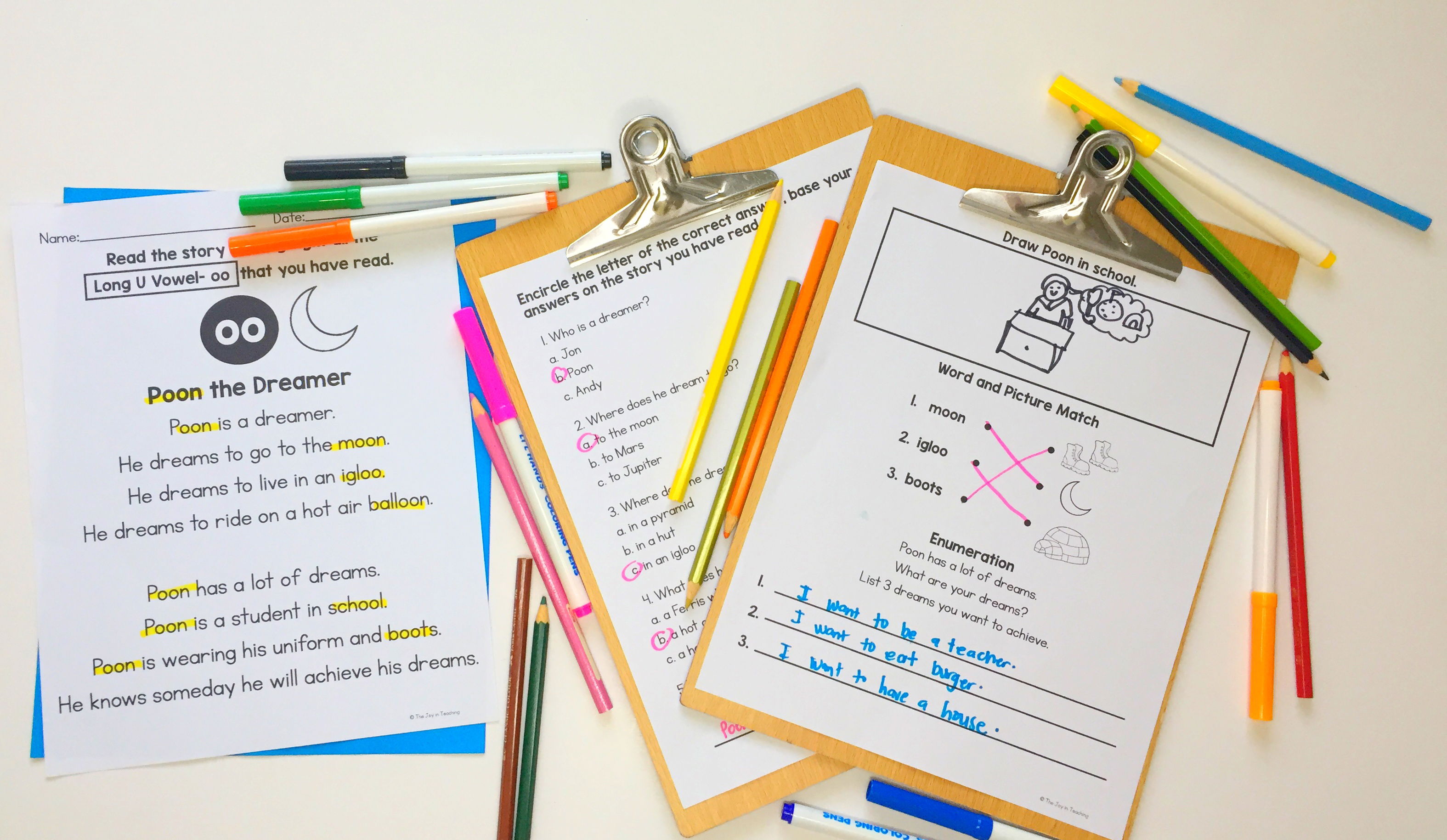
10. R-Controlled Vowel Reading Comprehension Passage This passage helps kids practice reading words with r-controlled vowels, improving their comprehension and phonics skills.

11. CVC Short Vowel A Reading Comprehension Passage Designed for beginning readers, this passage focuses on CVC short vowel A words, engaging kids with multiple-choice questions, drawing, and character comparisons.
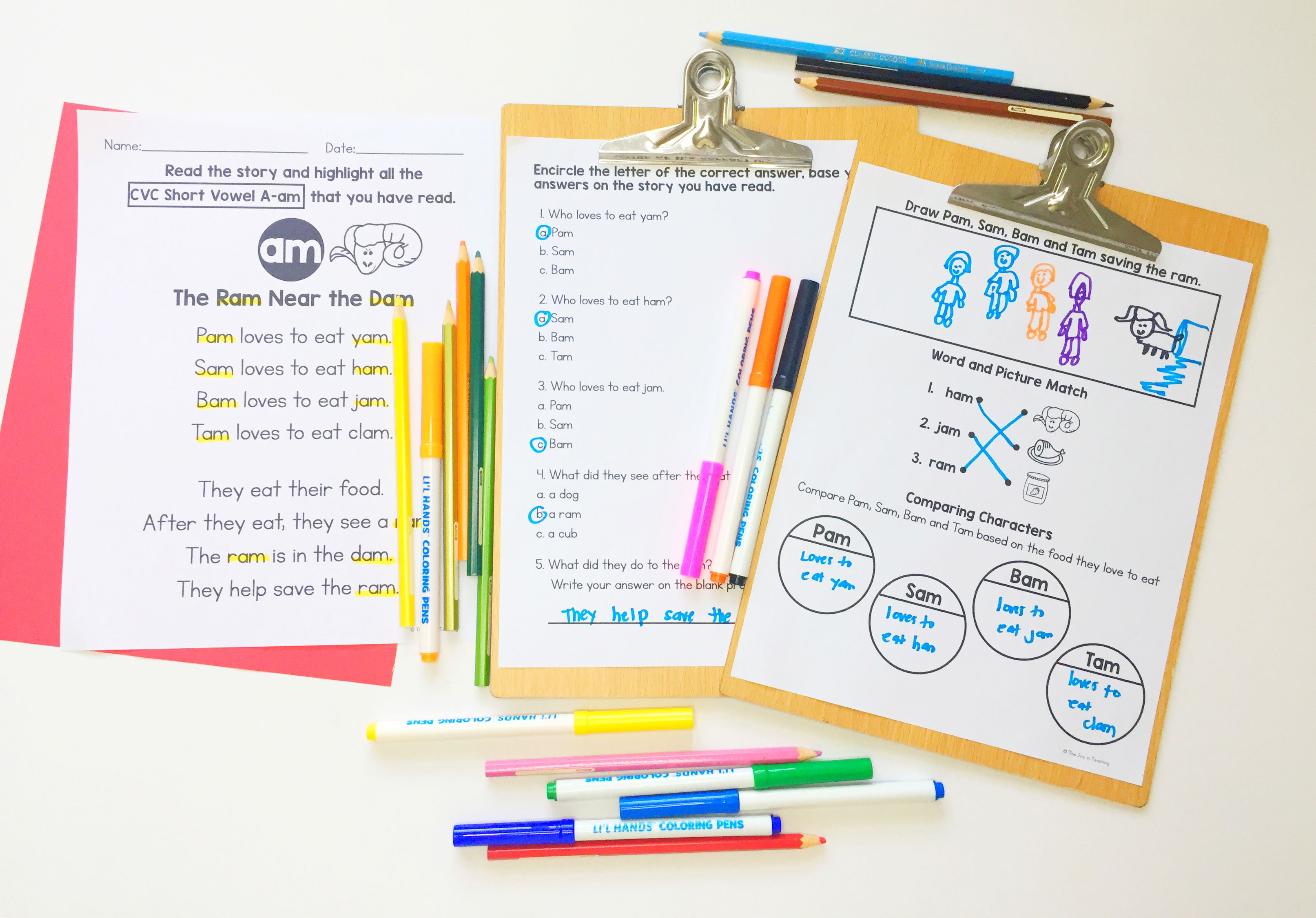
12. CVC Short Vowel E Reading Comprehension Passage Focusing on CVC short vowel E words, this passage enhances reading comprehension through interactive activities like word and picture matching.
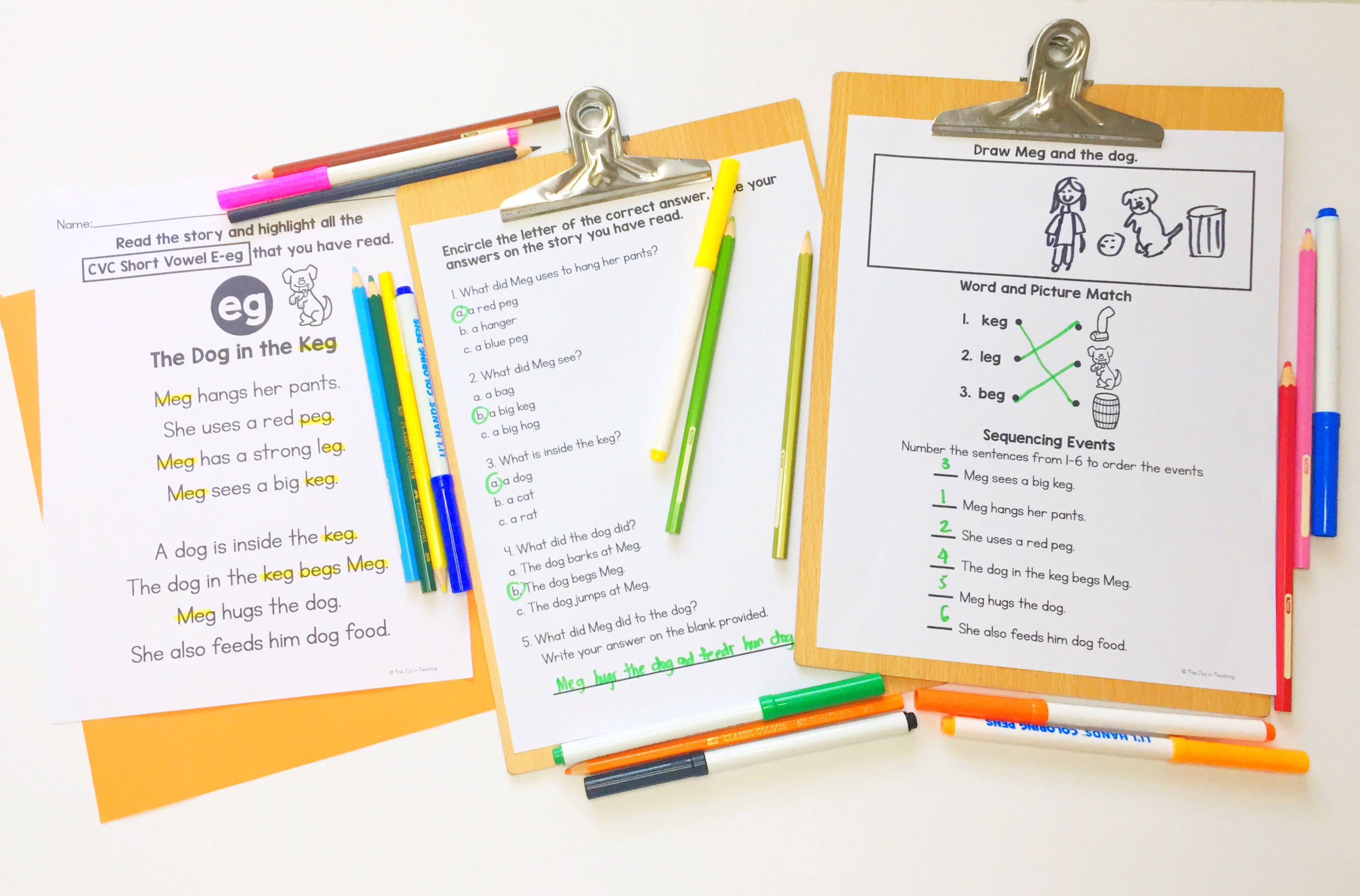
13. CVC Short Vowel I Reading Comprehension Passage This passage helps kids practice reading CVC short vowel I words through various activities, including drawing and essay writing.
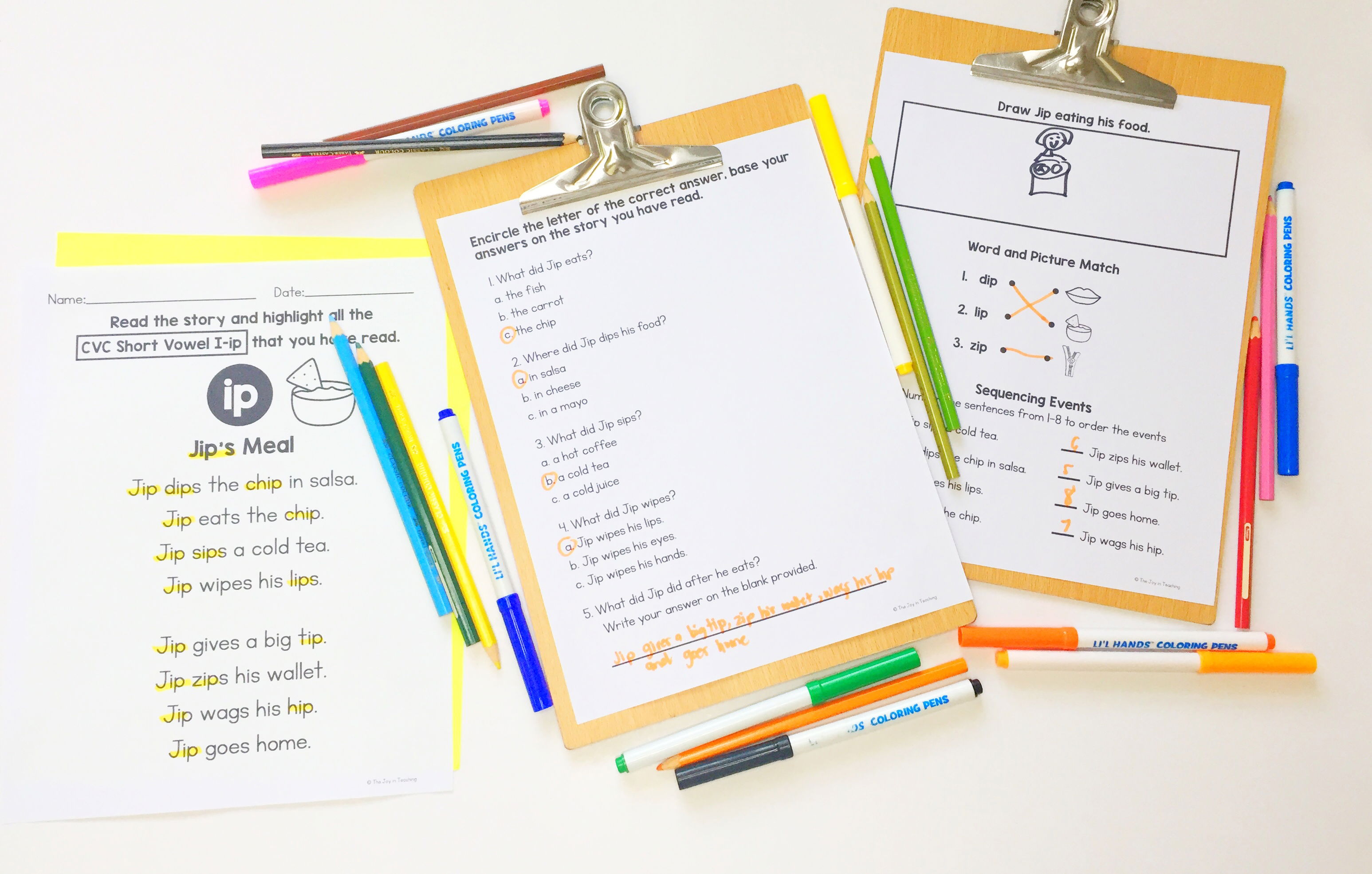
14. CVC Short Vowel O Reading Comprehension Passage Designed for CVC short vowel O words, this passage engages kids with multiple-choice questions, drawing, and sequencing events.
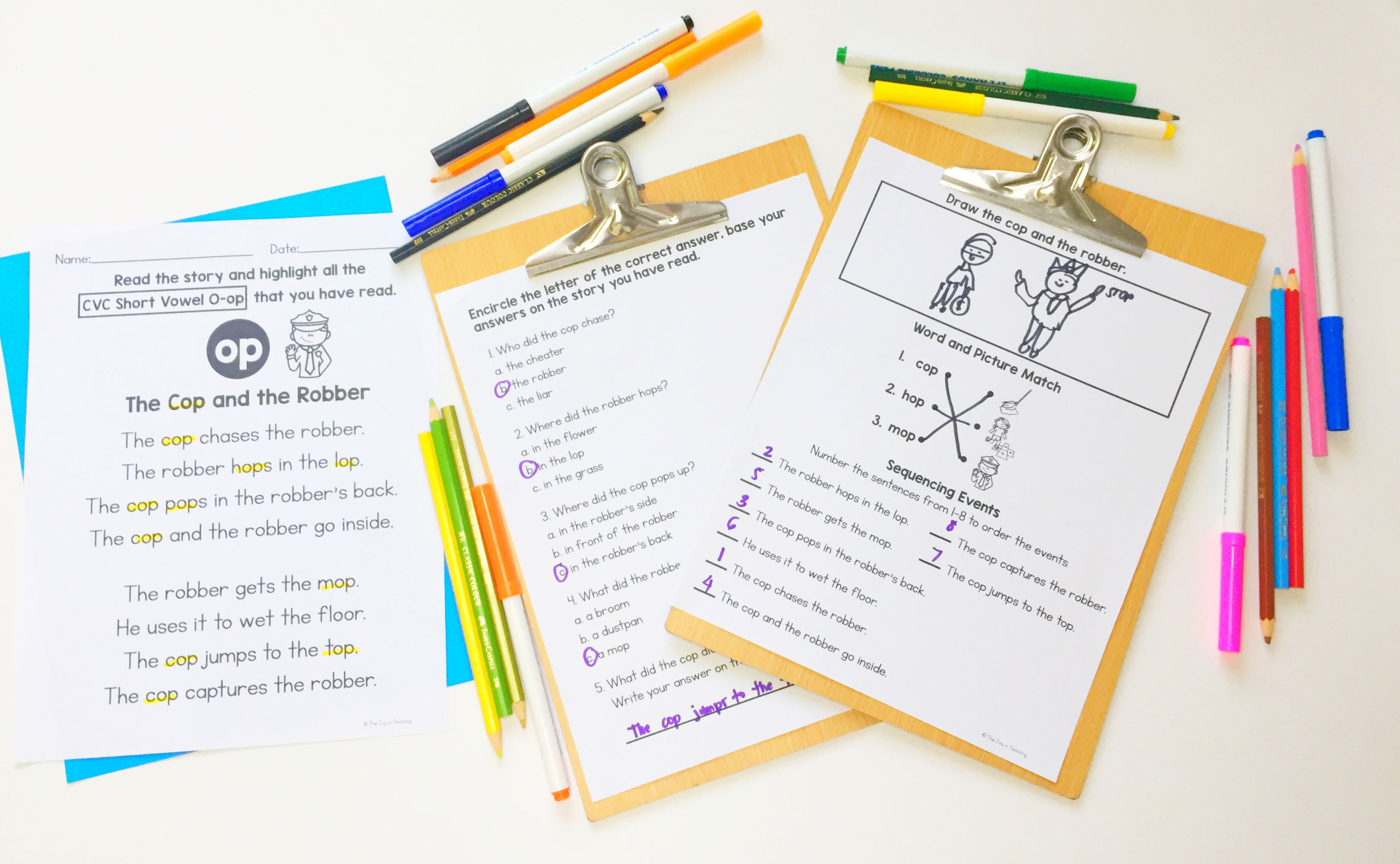
15. CVC Short Vowel U Reading Comprehension Passage Focusing on CVC short vowel U words, this passage helps kids improve their reading comprehension through interactive activities.
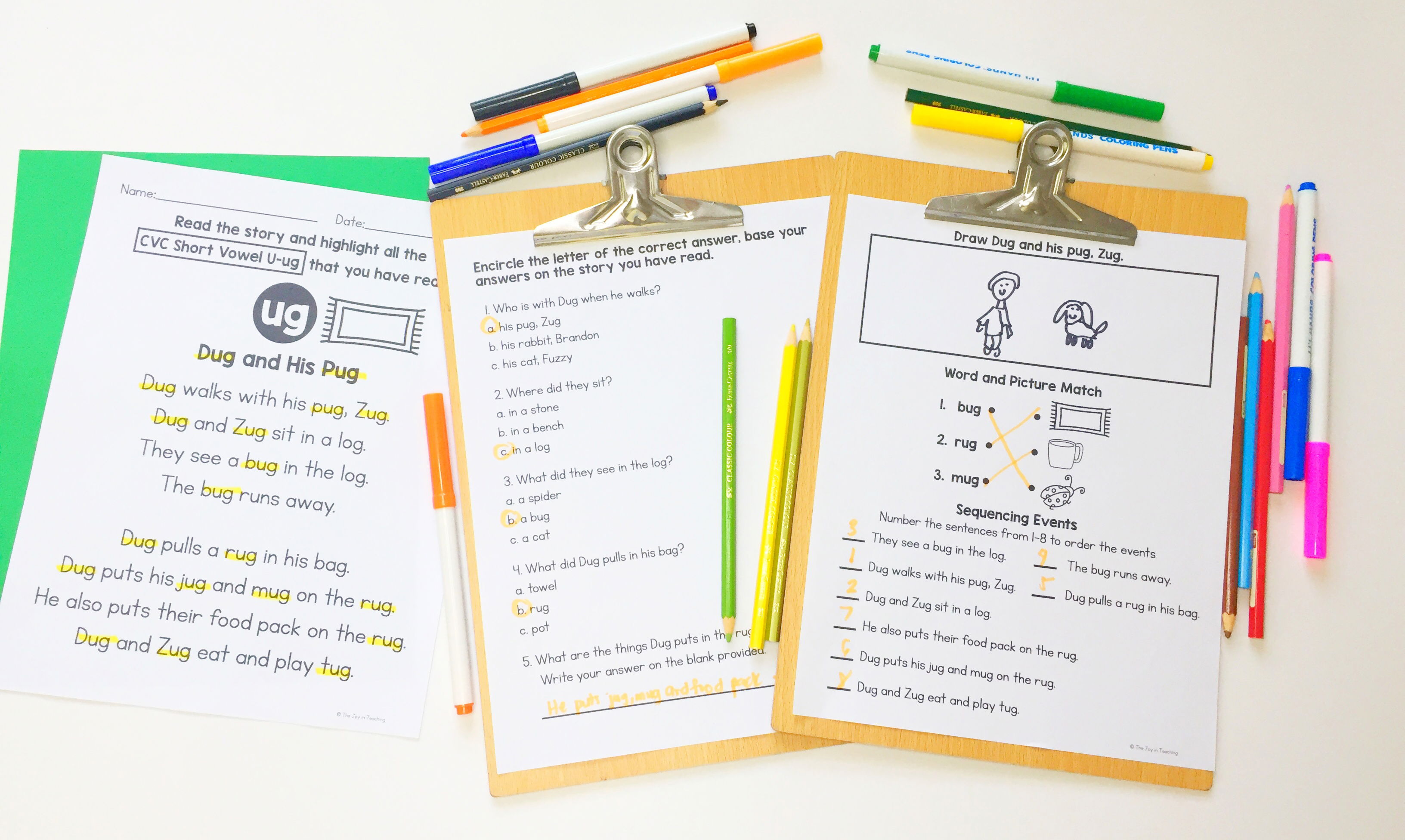
16. CVCE Reading Comprehension Passage This passage incorporates CVCE words in the passages, helping kids practice reading and comprehension through multiple-choice questions and drawing.
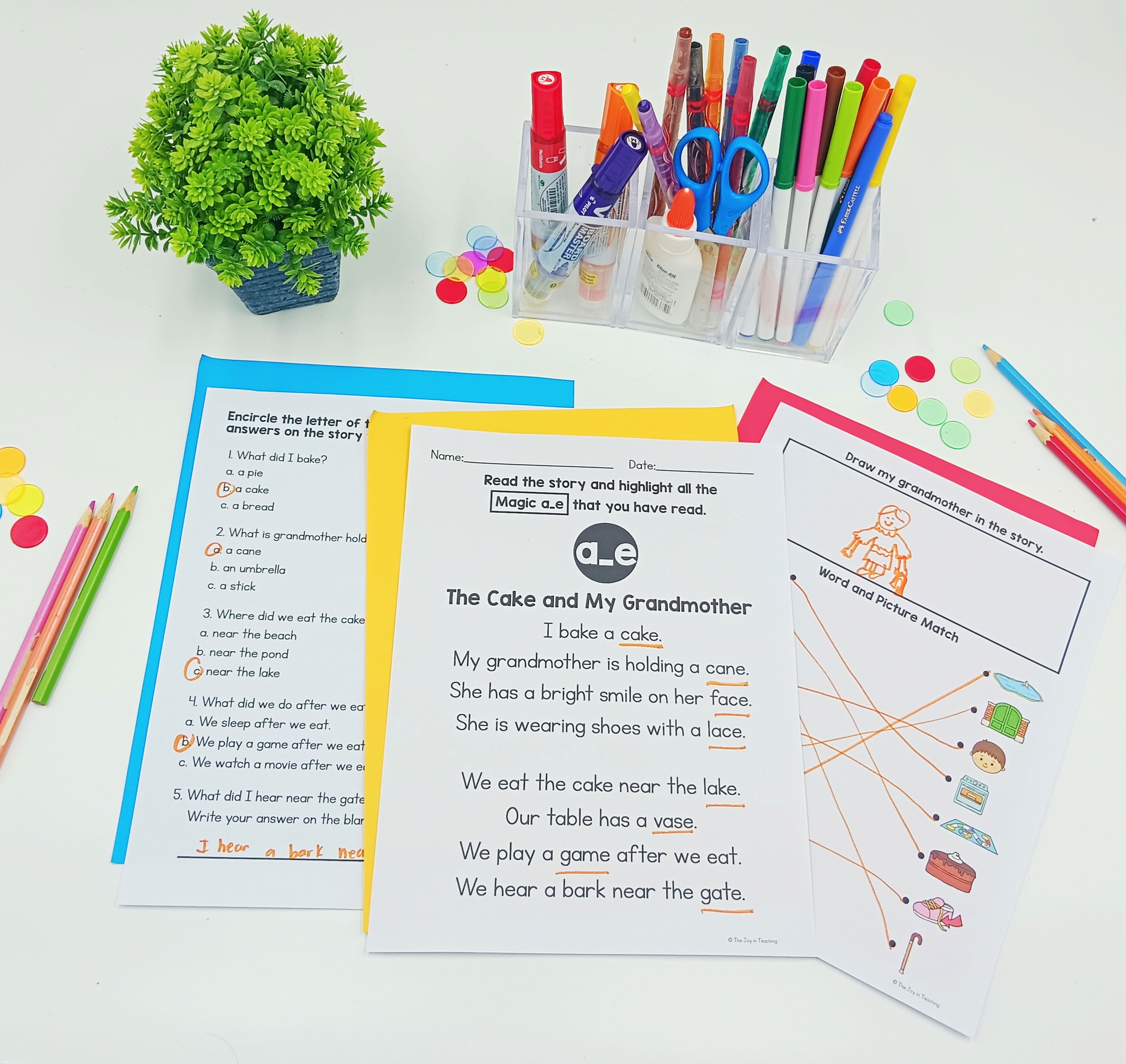
17. Trigraph Reading Comprehension Passage Focusing on trigraphs, this passage enhances kids' reading comprehension skills through engaging activities like word and picture matching.
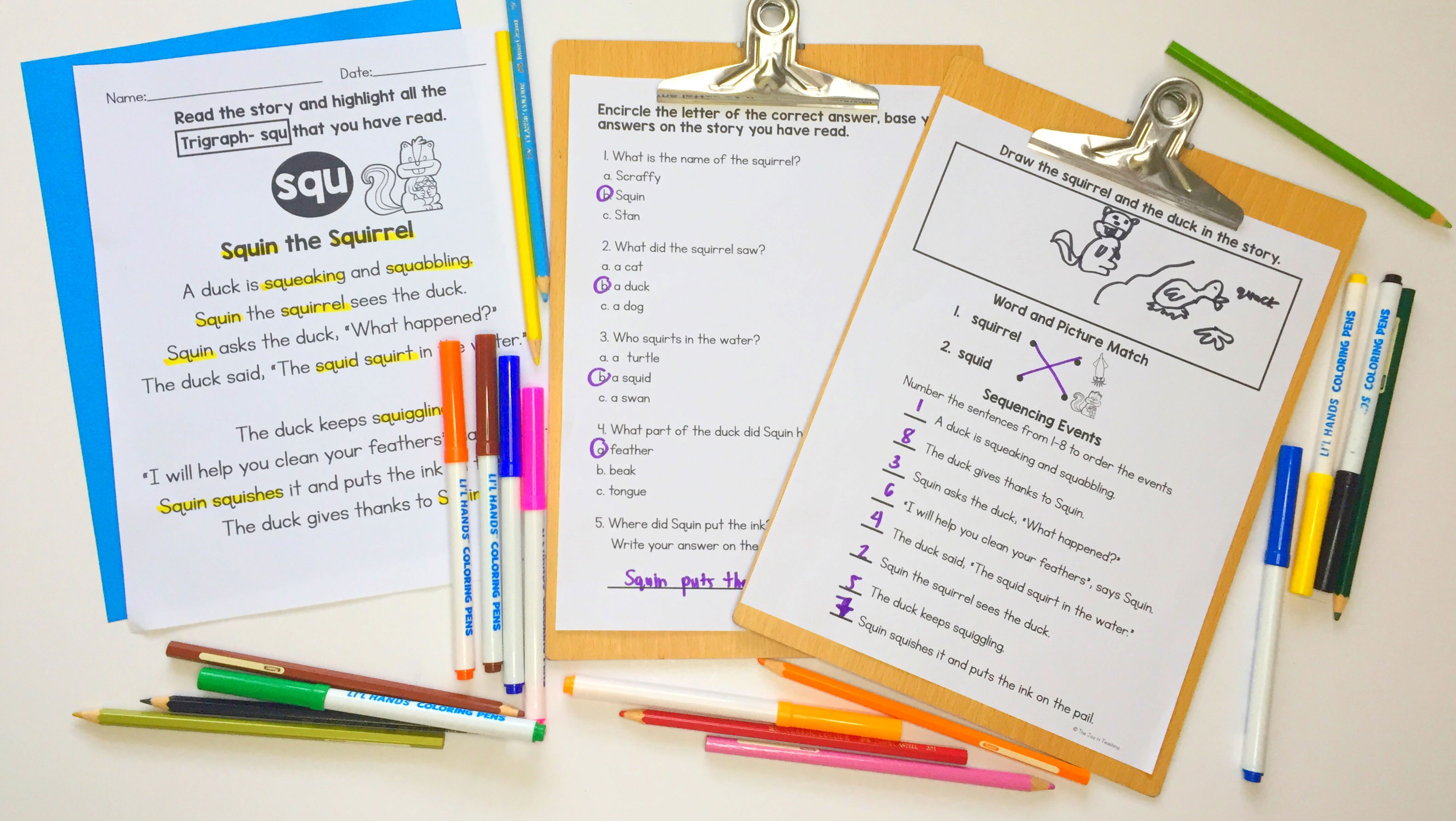
18. Step-by-Step Reading CVC Reading Passage This passage provides a step-by-step approach to enhance reading fluency and comprehension. Kids start by reading letters and syllables, then progress to reading the passage and answering comprehension questions.
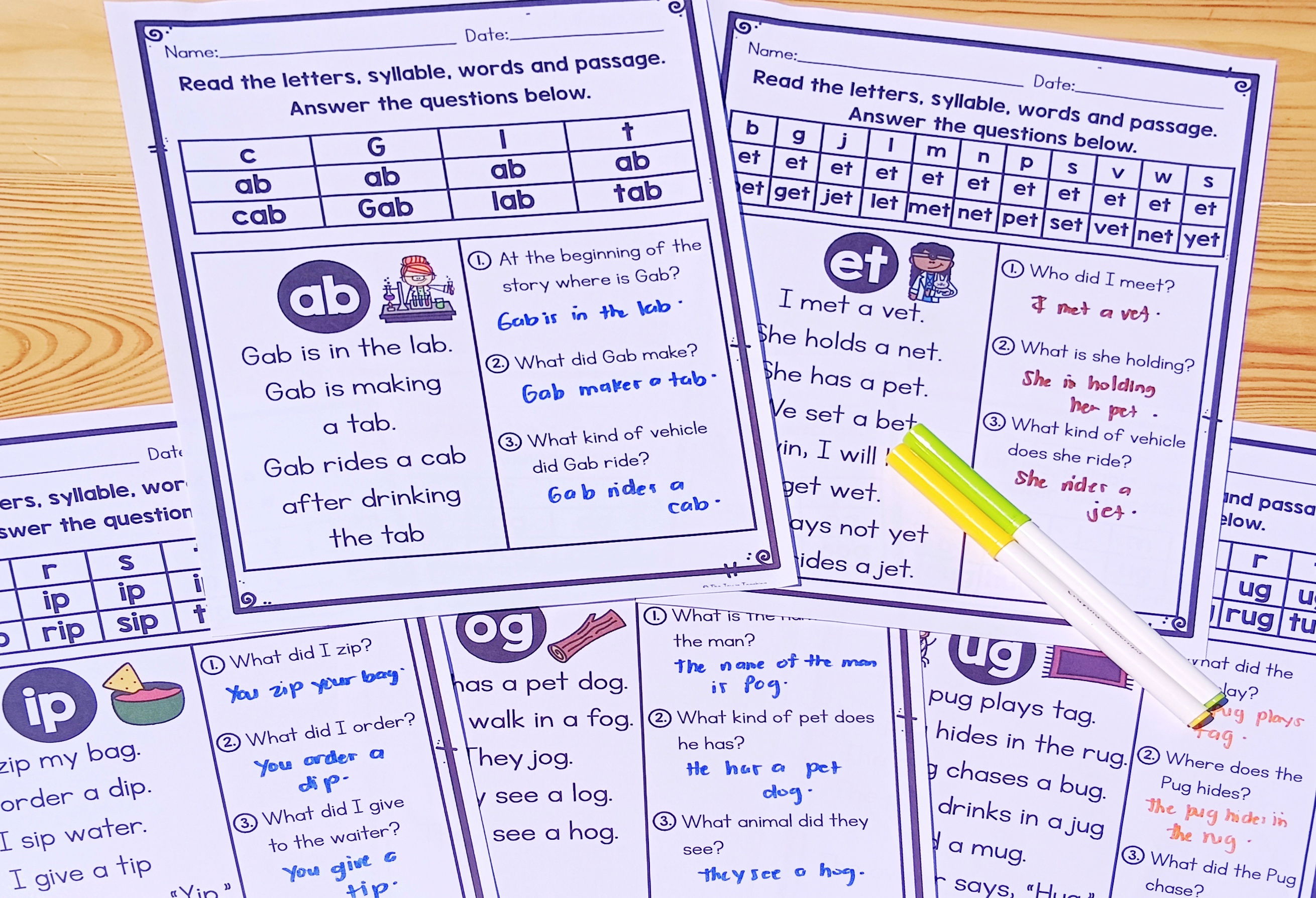
19. Bossy R Worksheet The Bossy R Reading Passage helps kids practice reading r-controlled vowels. They engage in activities like reading letters, syllables, and words, followed by reading the passage and answering comprehension questions.
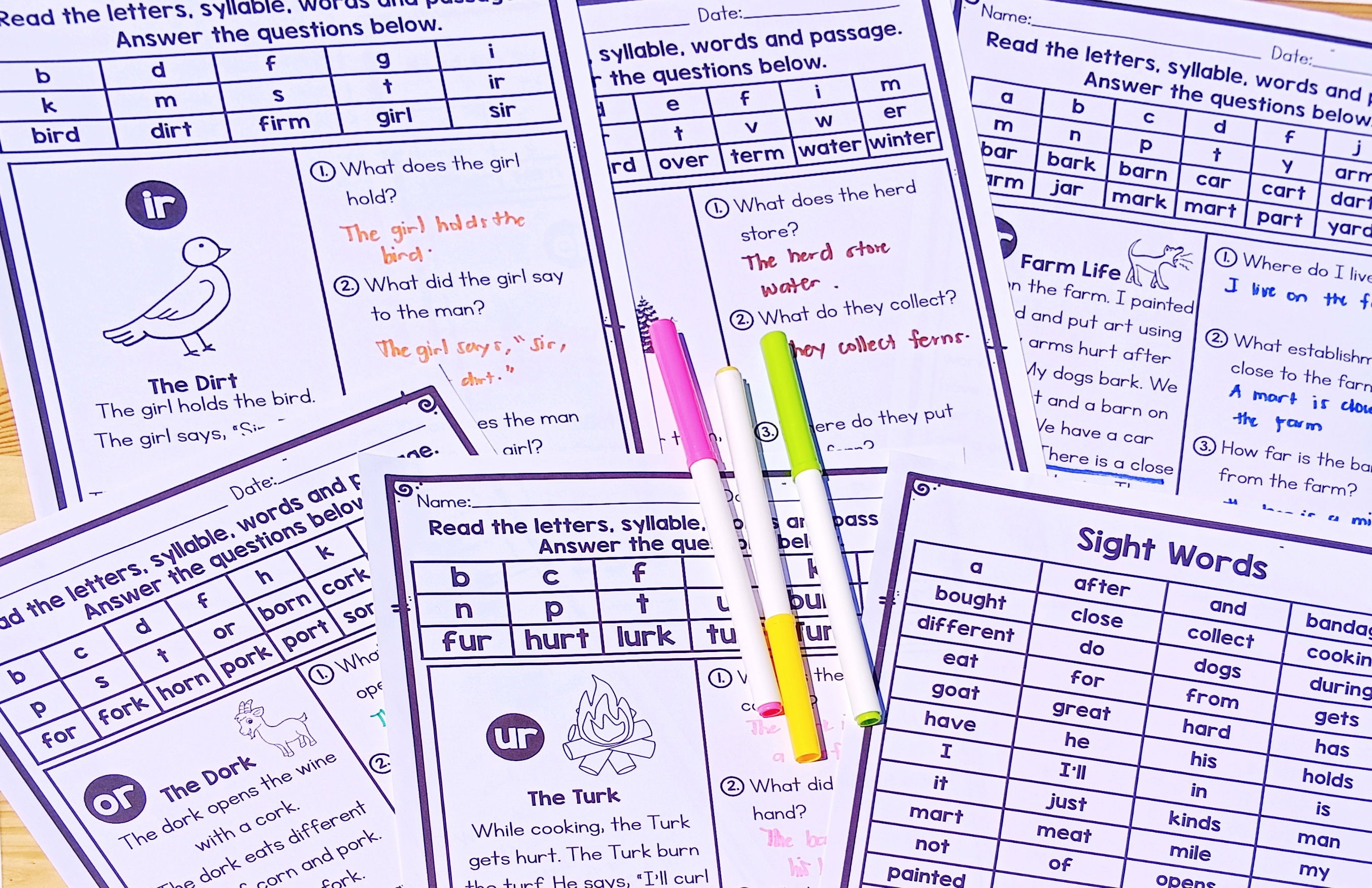
Advanced Reading Comprehension: Taking It Up a Notch
Once kids have a solid foundation, it's time to challenge them with more advanced passages. These passages focus on more complex phonics patterns and encourage deeper comprehension skills.
Highlighting Phonics As they read, kids highlight all the phonics features they've learned. This not only reinforces their knowledge but also enhances their outlining skills for the future.
Copying the Story Copying the entire story onto separate paper improves spacing and writing skills. It’s also a great way to ensure they understand the text deeply.
Test Reading Understanding Advanced passages include more challenging questions to test comprehension, encouraging kids to think critically about what they've read.
1. Beginning Blends Reading Comprehension Passage This passage is a great review or assessment in phonics, enhancing kids' reading understanding and paragraph writing skills.
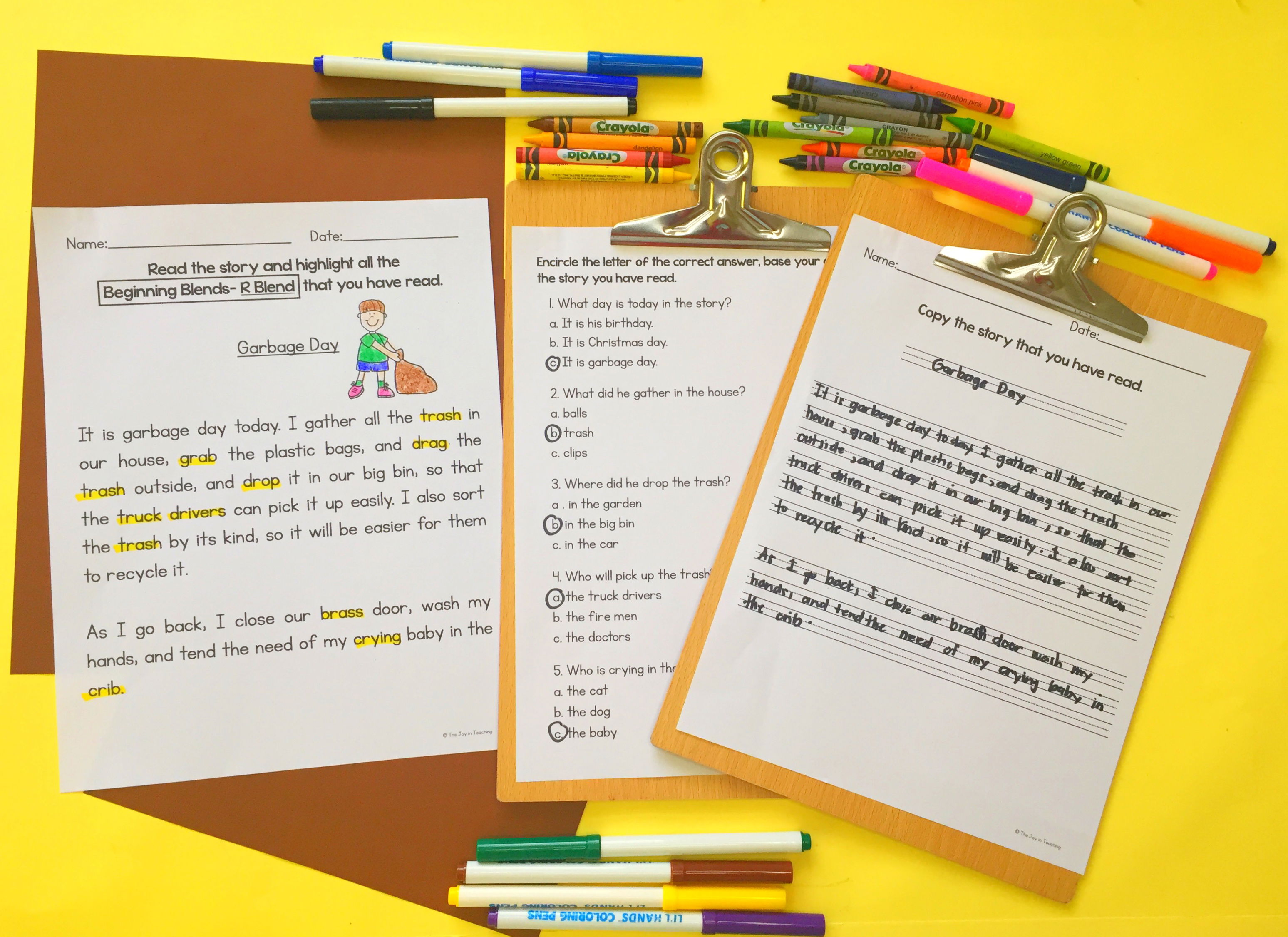
2. Diphthong Reading Comprehension Passage This passage helps kids review and assess their understanding of diphthong words, enhancing their reading and writing skills.
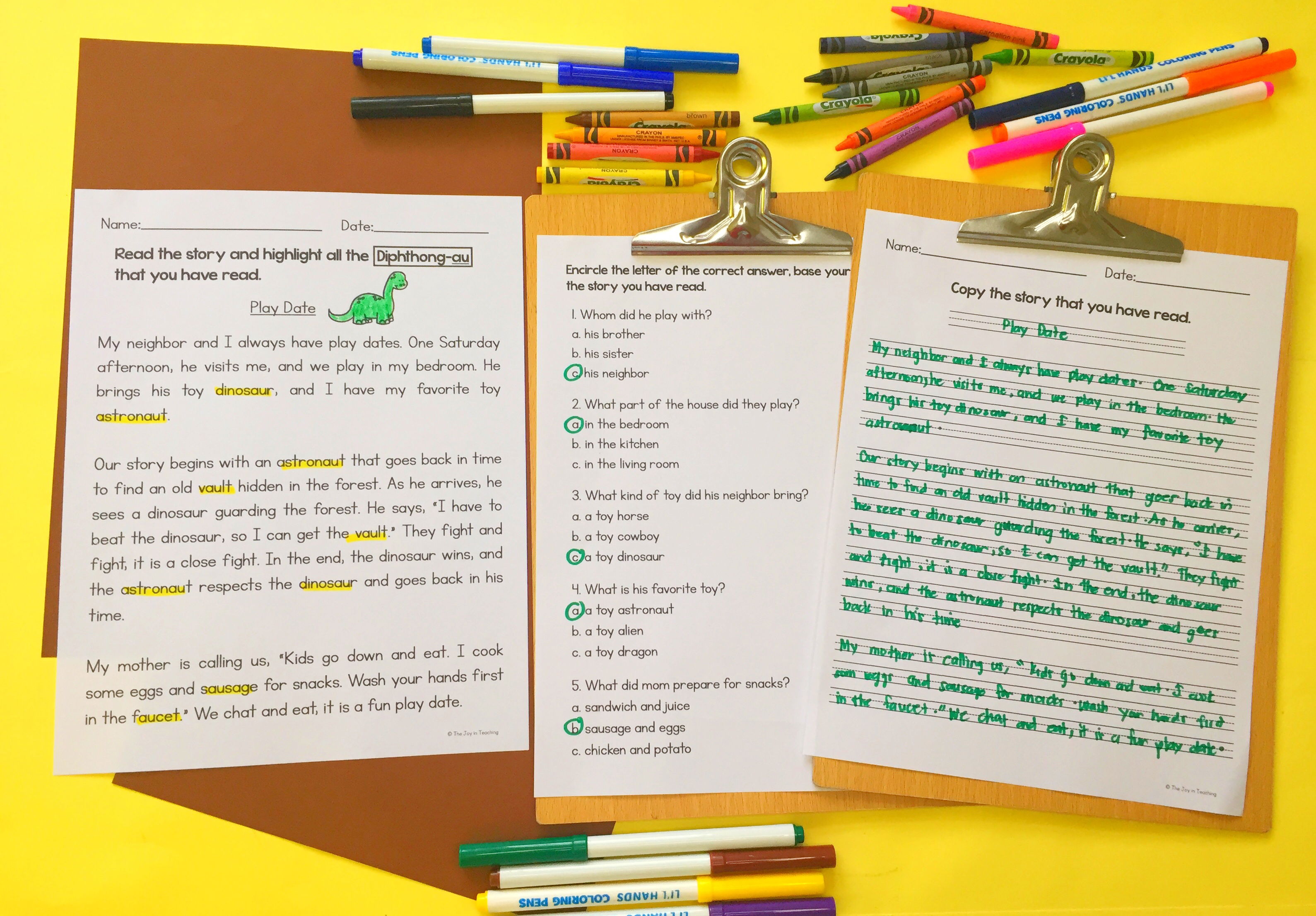
3. Ending Blends Reading Comprehension Passage Focusing on ending blends, this passage helps kids review and assess their comprehension and paragraph writing abilities.
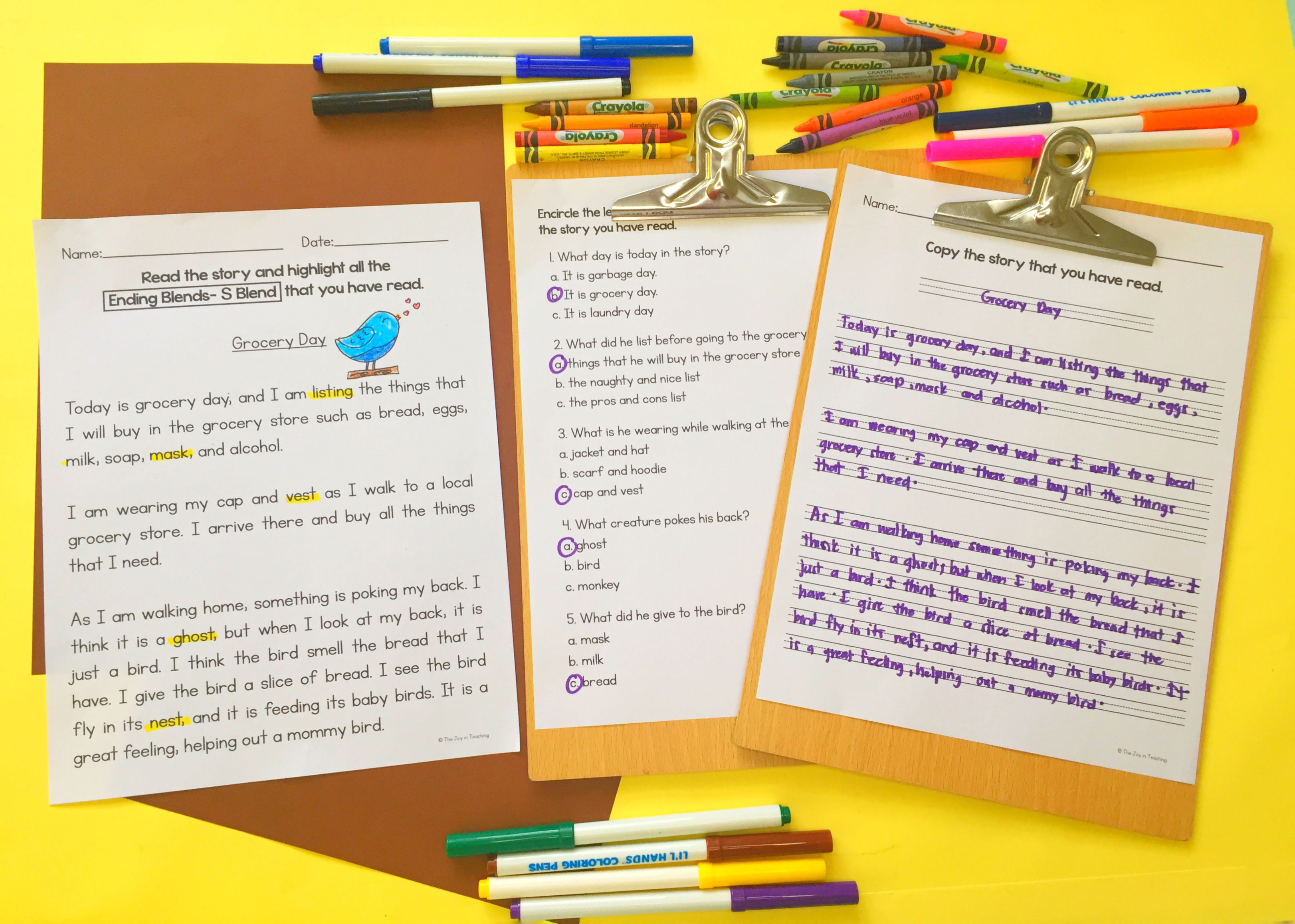
4. Long Vowel Reading Comprehension Passage This passage targets long vowel sounds, helping kids review and enhance their reading comprehension and writing skills.
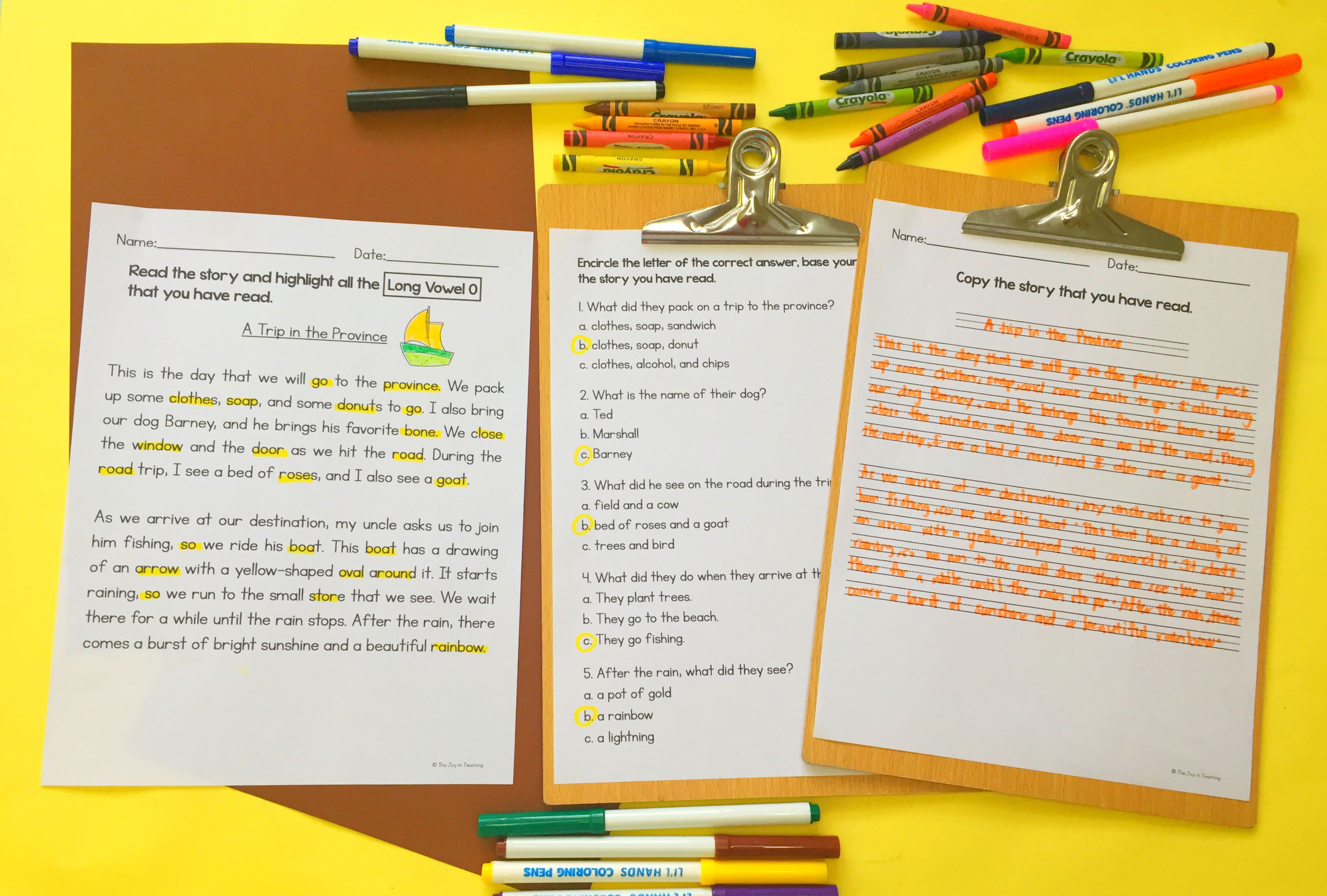
5. R-Controlled Vowel Reading Comprehension Passage This passage helps kids review and practice reading r-controlled vowels, enhancing their comprehension and writing abilities.
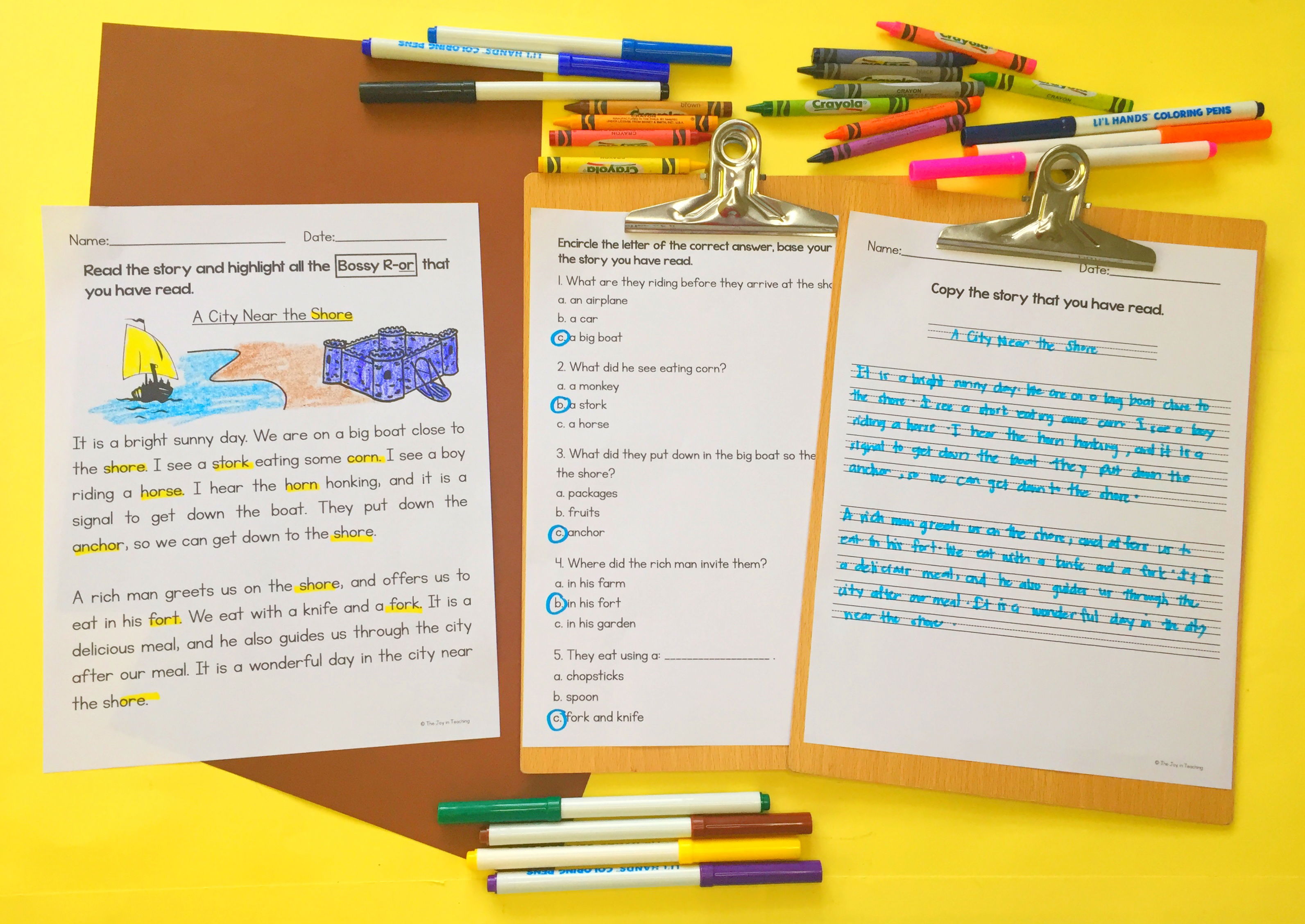
6. Trigraph Reading Comprehension Passage Focusing on trigraphs, this passage helps kids review and assess their reading comprehension and writing skills.
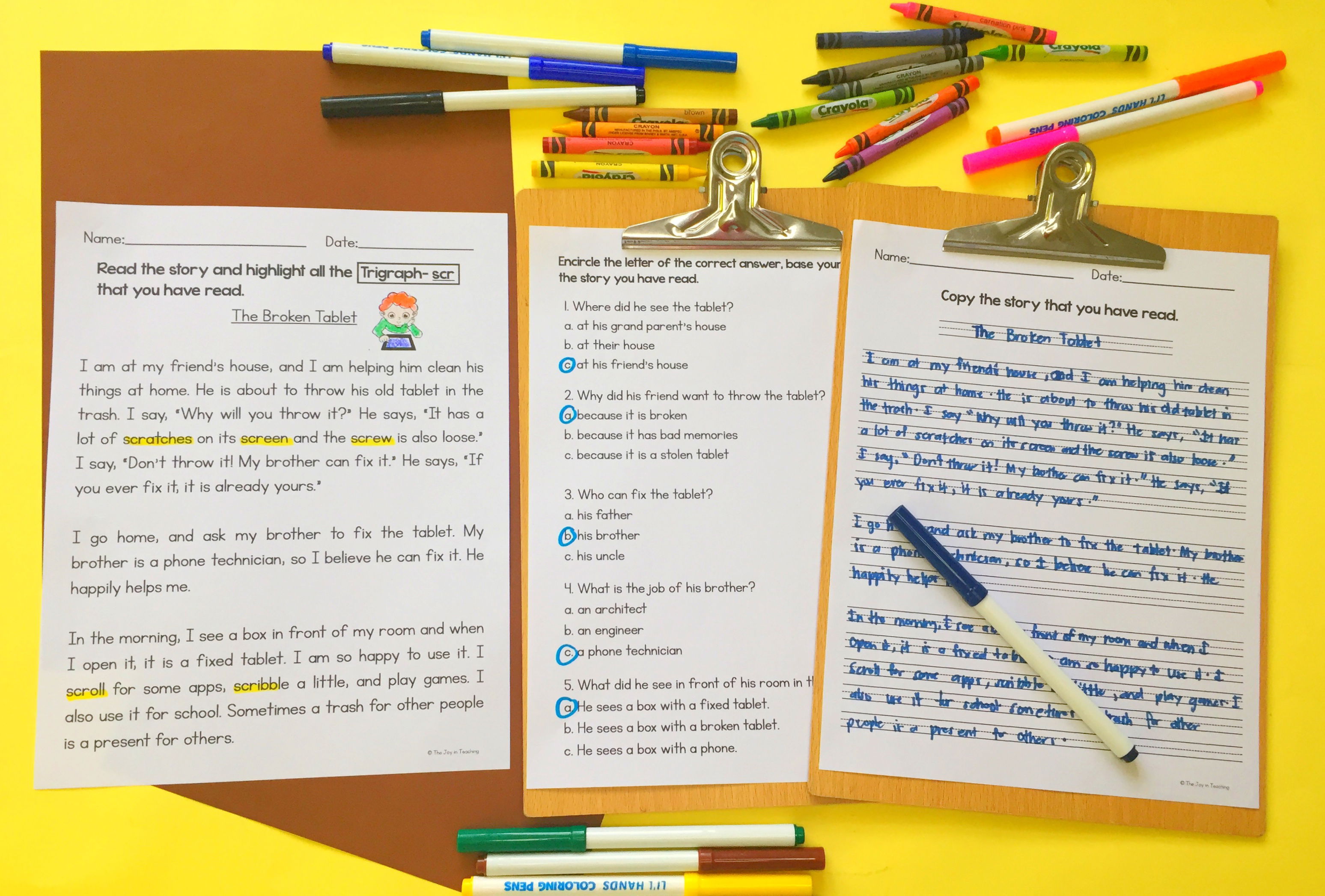
7. Digraph Reading Comprehension Passage This passage is designed to help kids review and practice reading digraph words, enhancing their comprehension and writing abilities.
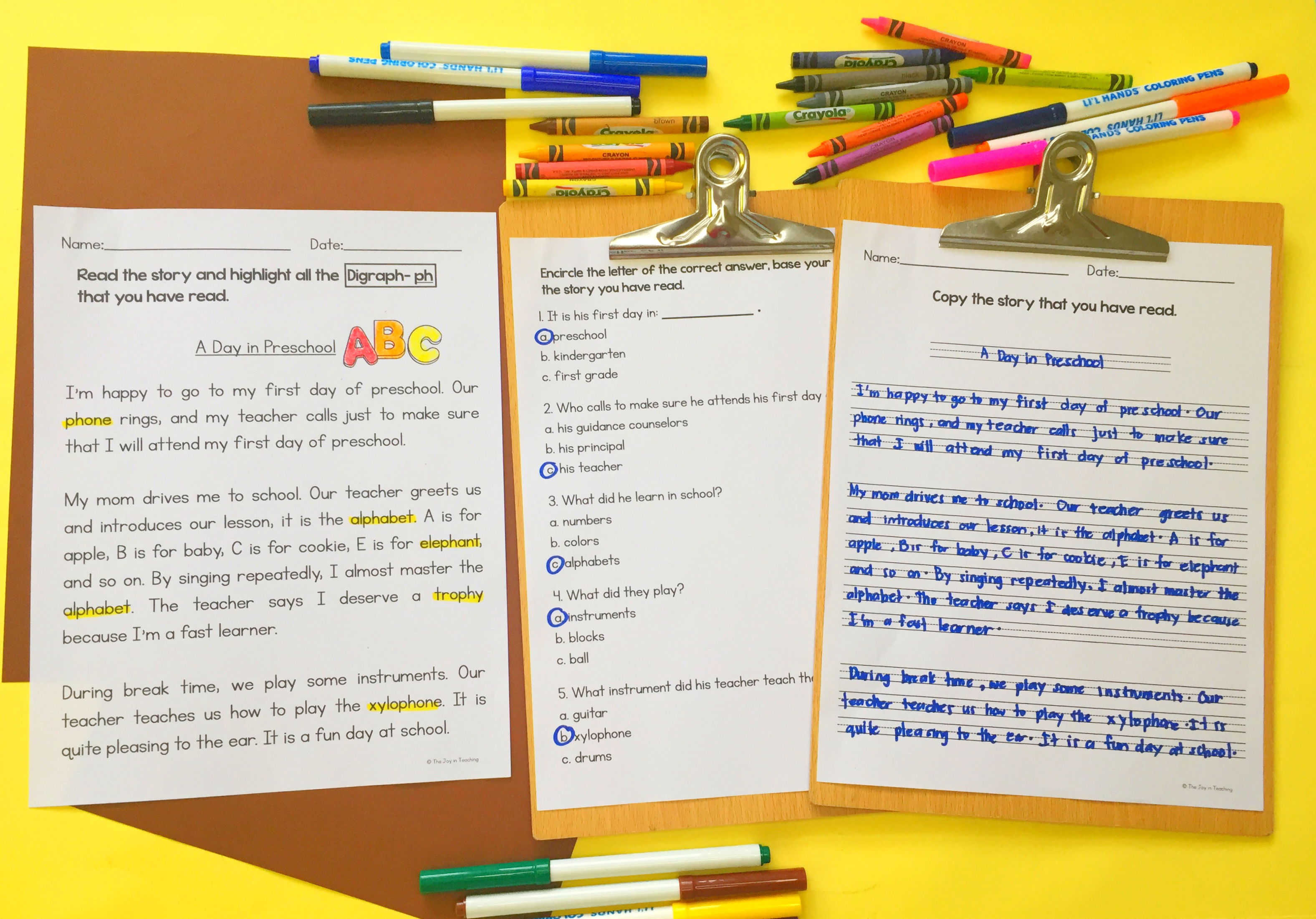
Holiday Reading Comprehension: Adding Seasonal Fun Injecting some seasonal fun into reading can make comprehension practice even more exciting. Here are a few holiday-themed passages to consider:
1. Valentine’s Day Celebrate love and affection with a Valentine’s Day Reading Passage. Engaging stories and creative activities help kids connect with the theme while enhancing their reading skills.

2. Summer A Summer Reading Passage can capture the essence of the sunny season. Kids can enjoy stories about beach trips, picnics, and other summer fun while practicing comprehension.
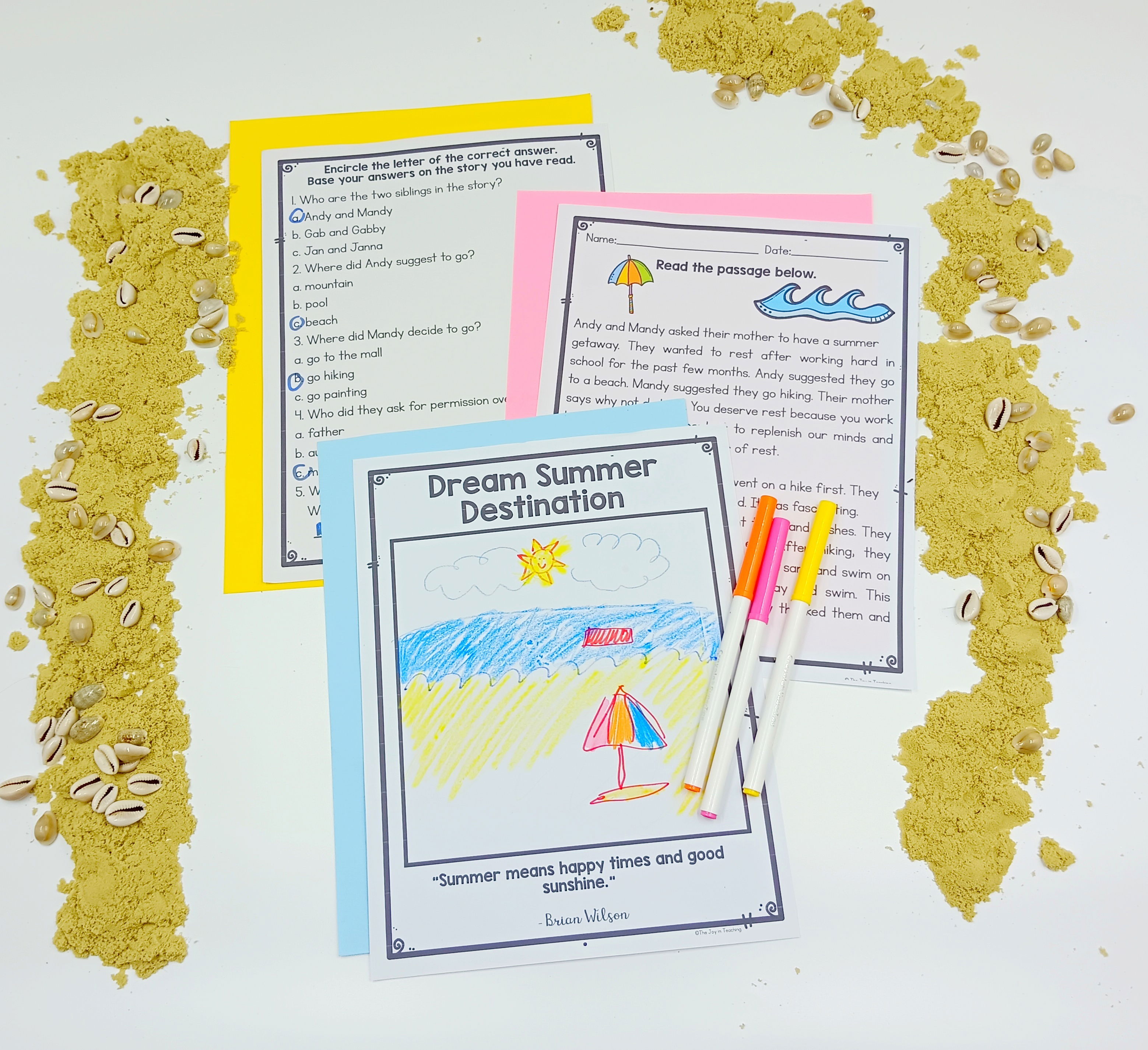
3. Halloween Halloween-themed passages bring a bit of spooky excitement. Kids love reading about ghosts, goblins, and trick-or-treating, which makes learning feel like play.
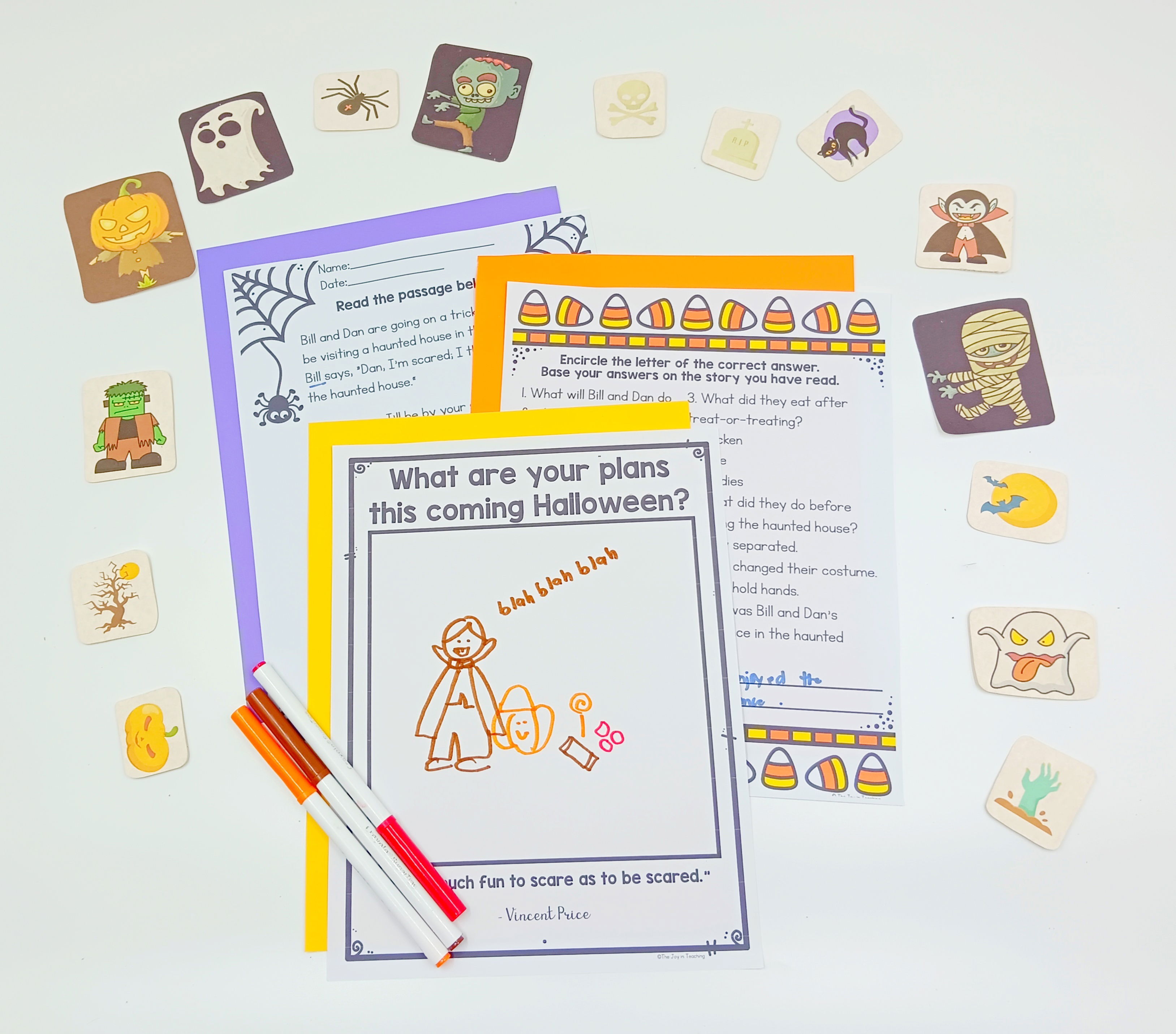
4. Christmas Christmas Reading Passages filled with festive stories and activities keep kids engaged during the holiday season. It’s a great way to maintain learning momentum during the break.
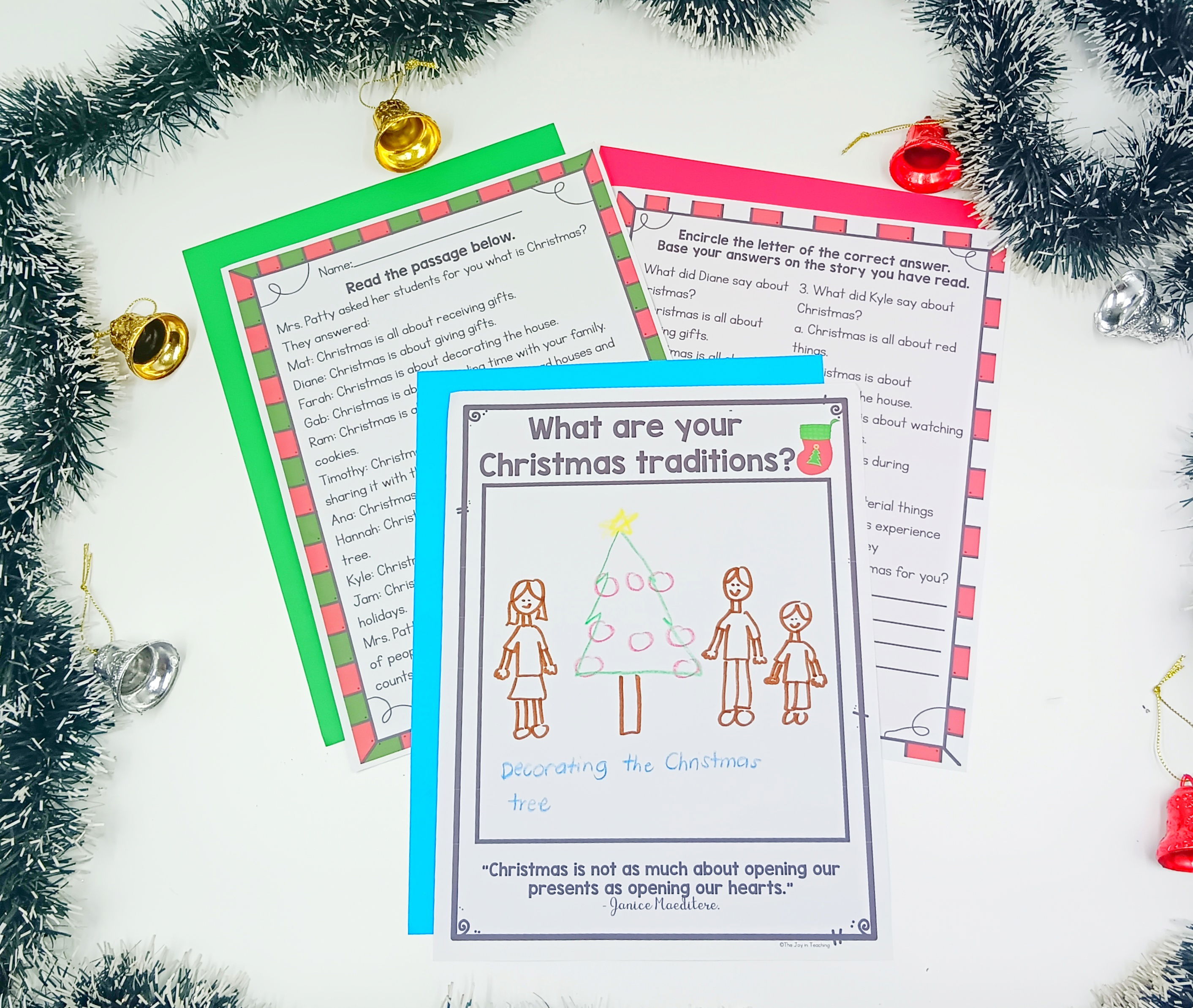
5. Mother’s Day This free Mother’s Day Reading Passage is a wonderful activity to celebrate the holiday while enhancing reading comprehension skills. Kids can read the story, copy it, and answer questions to test their understanding.
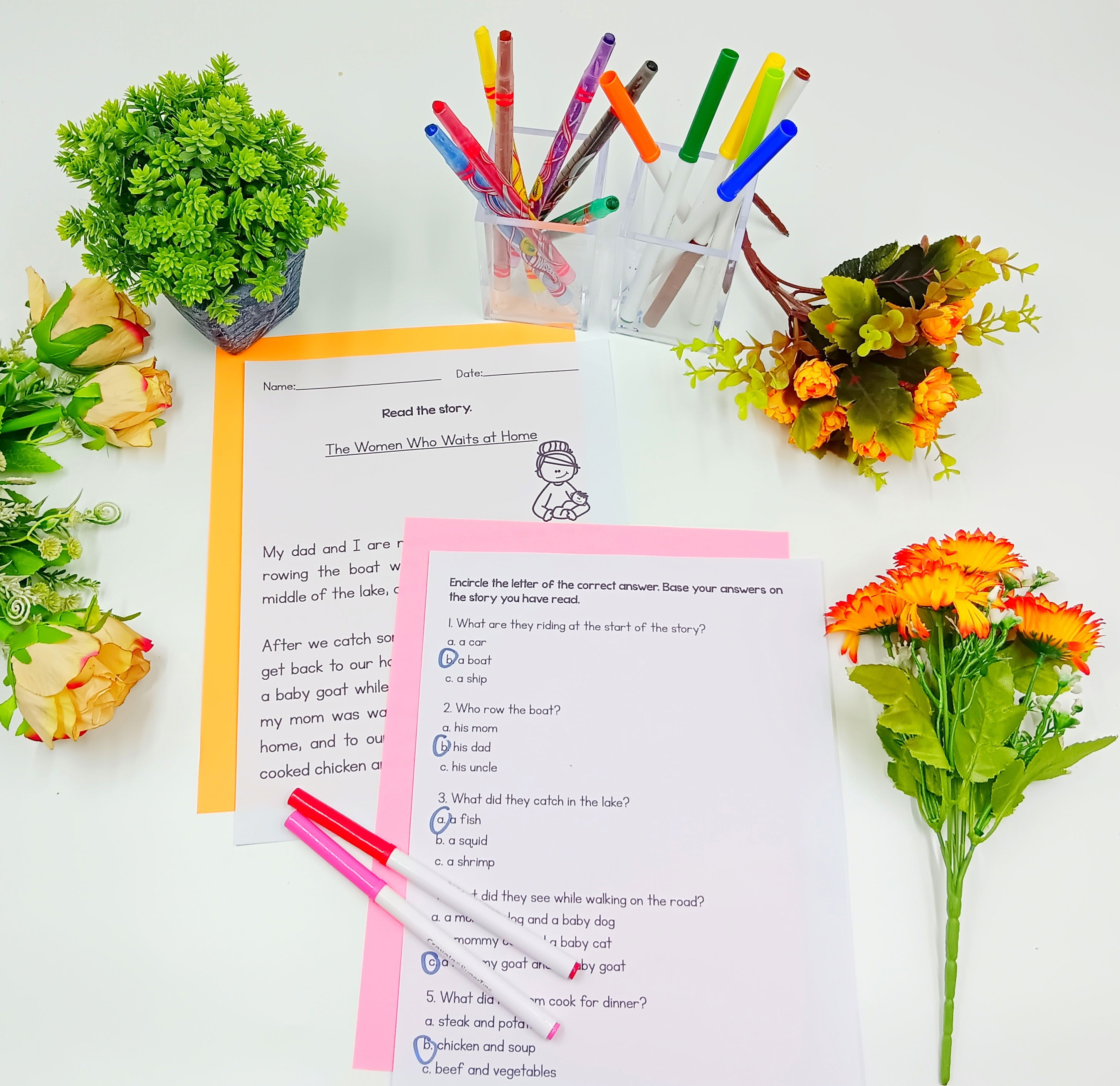
Tips and Tricks for Teaching Reading Comprehension Teaching reading comprehension doesn’t have to be daunting. Here are some tried-and-true tips and tricks to make the process smoother and more enjoyable:
1. Make Reading a Daily Habit Consistency is key. Set aside a specific time each day for reading. Whether it’s before bed or after breakfast, creating a routine helps kids see reading as a regular part of their day.
2. Use a Variety of Materials Don’t limit reading to books. Use magazines, comic books, and even recipe cards to mix things up. The more diverse the reading material, the more engaging it will be.
3. Encourage Story Retelling After reading a story, ask your child to retell it in their own words. This helps reinforce comprehension and memory. Plus, it’s fun to hear their unique take on the story!
4. Create a Reading-Friendly Environment Set up a cozy reading nook with plenty of light and comfortable seating. Having a dedicated space for reading makes it feel special and inviting.
5. Be a Reading Role Model Let your kids see you reading. Whether it’s a book, a newspaper, or a magazine, your enthusiasm for reading will be contagious.
6. Ask Open-Ended Questions Encourage critical thinking by asking open-ended questions about the story. Questions like, “Why do you think the character did that?” or “What do you think will happen next?” prompt kids to think beyond the text.
7. Use Graphic Organizers Graphic organizers, like Venn diagrams or story maps, can help kids organize their thoughts and understand the story structure better.
8. Incorporate Technology Use educational apps and websites to supplement reading practice. Interactive games and activities can make learning feel like play.
Additional Activities to Practice Reading Comprehension Here are some extra activities that you can do at home or in the classroom to reinforce reading comprehension skills:
1. Word Hunts Turn reading into a scavenger hunt by challenging kids to find specific words or phonics patterns in the text. This keeps them engaged and makes reading an active experience.
2. Story Mapping After reading a story, have kids create a story map that includes the setting, characters, problem, and solution. This visual representation helps them understand the structure of the story.
3. Character Diaries Encourage kids to write diary entries from the perspective of a story character. This activity fosters empathy and a deeper connection to the characters.
4. Create a Book Club Form a book club with a few friends or classmates. Discussing books with peers can enhance comprehension and make reading a social activity.
5. Puppet Shows Use puppets or stuffed animals to act out stories. This activity makes reading interactive and helps kids understand dialogue and narrative flow.
6. Interactive Reading Logs Instead of just writing summaries, encourage kids to draw pictures, write questions, or make predictions in their reading logs. This makes the log a creative outlet as well as a record of their reading progress.
7. DIY Storybooks Have kids create their own storybooks, complete with illustrations. This activity encourages creativity and helps them understand story structure and elements.
8. Use Props Incorporate props related to the story’s theme. For example, if the story is about a pirate adventure, use toy swords, hats, and maps to bring the story to life.
Final Thoughts: Making Reading Comprehension Fun and Effective
Teaching reading comprehension to kids is a rewarding journey filled with moments of discovery and joy. By using a variety of passages, incorporating fun activities, and applying the tips and tricks outlined above, you can help your child or student become a confident and enthusiastic reader. Remember, the goal is not just to read but to understand and enjoy the stories. So, let’s make reading an adventure they’ll love!
Follow Me for More Teaching Tips with Joy For more tips, resources, and a daily dose of teaching joy, follow me on:
Got questions or want to share your success stories? Drop me an email at thejoyinteaching@gmail.com. I love hearing from fellow educators and parents! Happy Teaching!
Joy Medalla
The Joy in Teaching 💛